In such cases, the chmod recursive option (R or recursive) sets the permission for a directory (and the files it contains) The syntax for changing the file permission recursively is chmod R permission directory Therefore, to set the 755 permission for all files in the Example directory, you would type sudo chmod R 755 ExampleW Allows files within the directory to be created, deleted, or renamed if the xFile permissions in Linux file system are managed in three distinct user classes user/owner, group and others/public Each class can have read, write and execute permissions File permission can be represented in a symbolic or numeric (octal) format
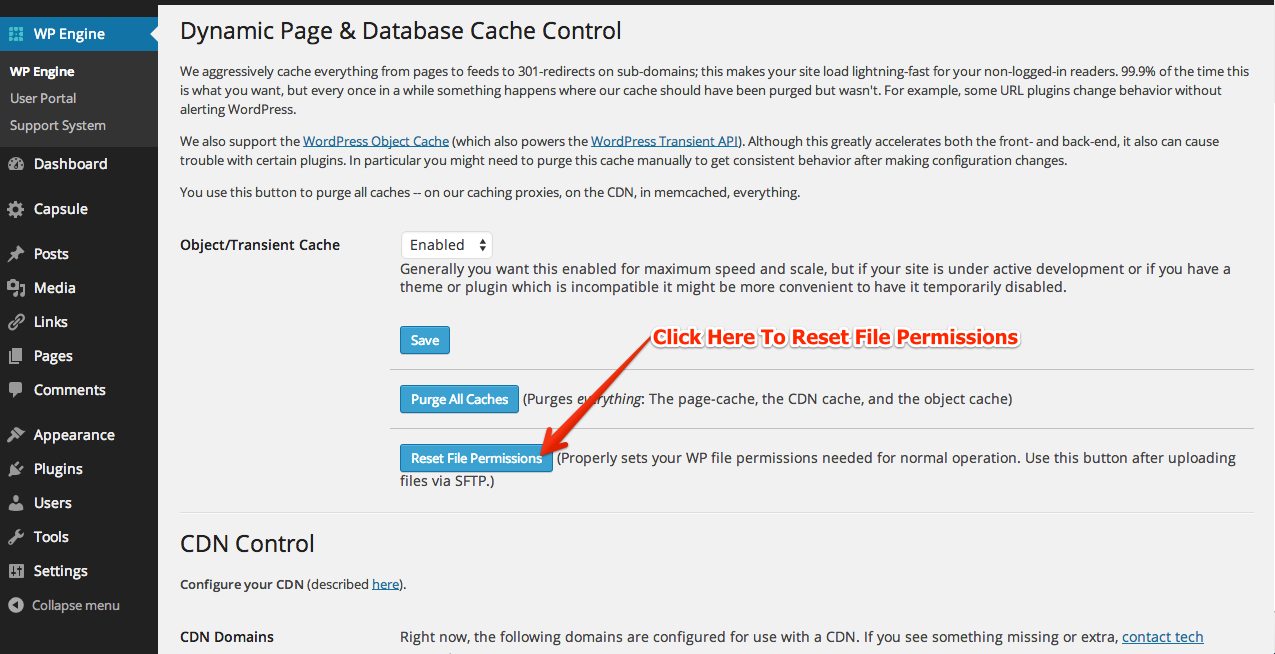
How To Reset File Permissions In Wordpress Wp Engine
Chmod file permissions mac
Chmod file permissions mac-Chmod u=rw,g=r,o=r filetxt The u flag sets the permissions for the file owner, g refers to the user group, while o refers to all other users The use of an equal sign (=) wipes all previous permissions for that category In this instance, the file owner is gaining read and write access, while the user group and other users are gaining readChmod rwx filename to add permissions chmod rwx directoryname to remove permissions chmod x filename to allow executable permissions chmod wx filename to take out write and executable permissions Note that "r" is for read, "w" is for write, and "x" is for execute This only changes the permissions for the owner of the file
/GettyImages-1021092796-ea8c63ee76f84bd5bf98c4222337fbb4.jpg)


How To Use The Chmod Command In Linux
To change the permissions of a file, one uses the chmod command, with the following syntax chmod referencesoperatormodes filename The references are shorthand (u, g, or o) for each class The operator determines whether to add (), remove () or explicitly set (=) the particular permissionsTo set user (owner) executable permission bit on chmod ux fileI'm logged into my Linux file server as "user1", in bash I've got an ext4 volume /z/ in which all of the files are in group and owned by "sambapublic" I want to access and manipulate the files within /z/ directly from bash (mv, cp, rm, and so on), bypassing samba I did sudo usermod a G sambapublic user1 and sudo chmod R gw /z/* Still
To turn on read, write, and execute permissions, and turn off the setuserID bit, setgroupID bit, and sticky bit attributes This is equivalent to chmod 0777 aprsal chmod a=rwx aprsal;If you've ran chmod R 777 / as root, follow these steps to restore it back Step 1Directory Permissions The chmod command can also be used to control the access permissions for directories Again, we can use the octal notation to set permissions, but the meaning of the r, w, and x attributes is different r Allows the contents of the directory to be listed if the x attribute is also set;
Git updateindex chmod=x path/to/file To remove it, use git updateindex chmod=x path/to/file Under the hood While this looks like the regular unix files permission system, actually it is not Git maintains a special "mode" for each file in its internal storage for regular files;We've added new file system features to WSL in Insider Build 1706 3You can now set the owner and group of files using chmod/chown and modify read/write/execute permissions in WSL You can also create special files like fifos, unix sockets, and device filesChmod permission file_name There are two ways to define permission using symbols (alphanumerical characters) using the octal notation method;



Ppt Changing File Permissions Chmod Absolute Permissions The Security Implications Using Chmod Recursively R Directory Powerpoint Presentation Id
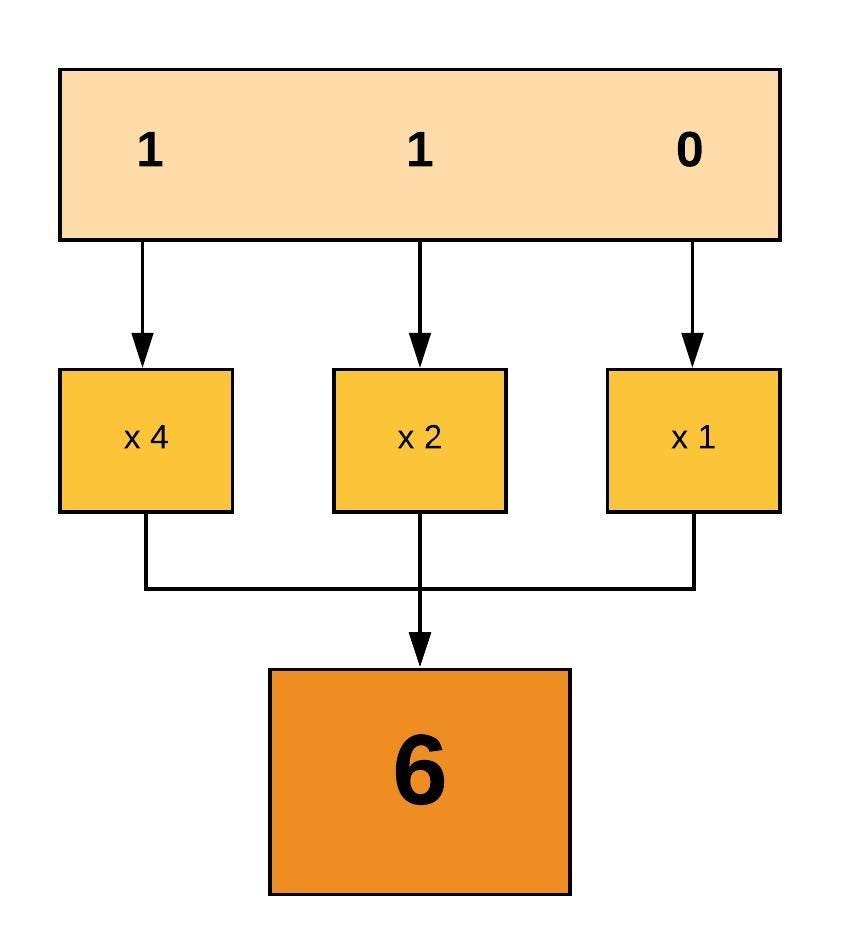


Linux File Permissions And Ownership By Udara Bibile Level Up Coding
The chmod command allows you to change the permissions on a file using either a symbolic orThe chmod command with the R options allows you to recursively change the file's permissions To recursively set permissions of files based on their type, use chmod in combination with the find command If you have any questions or feedback, feel free to leave a commentGroup can read only;
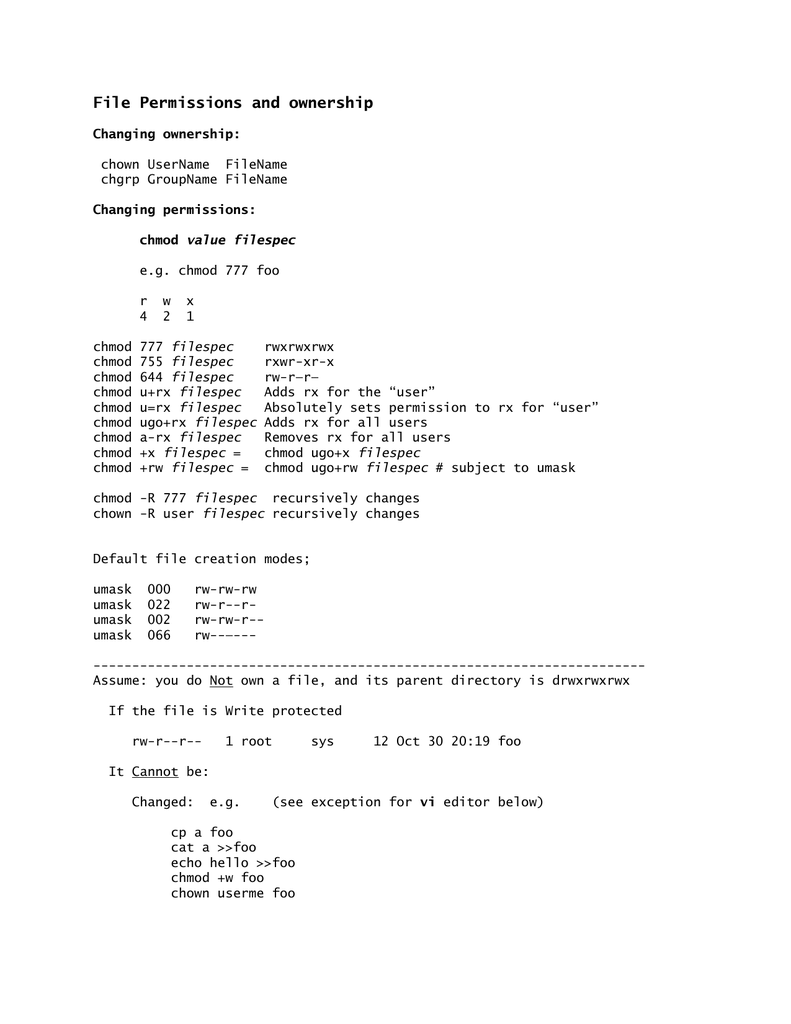


File Permissions And Ownership
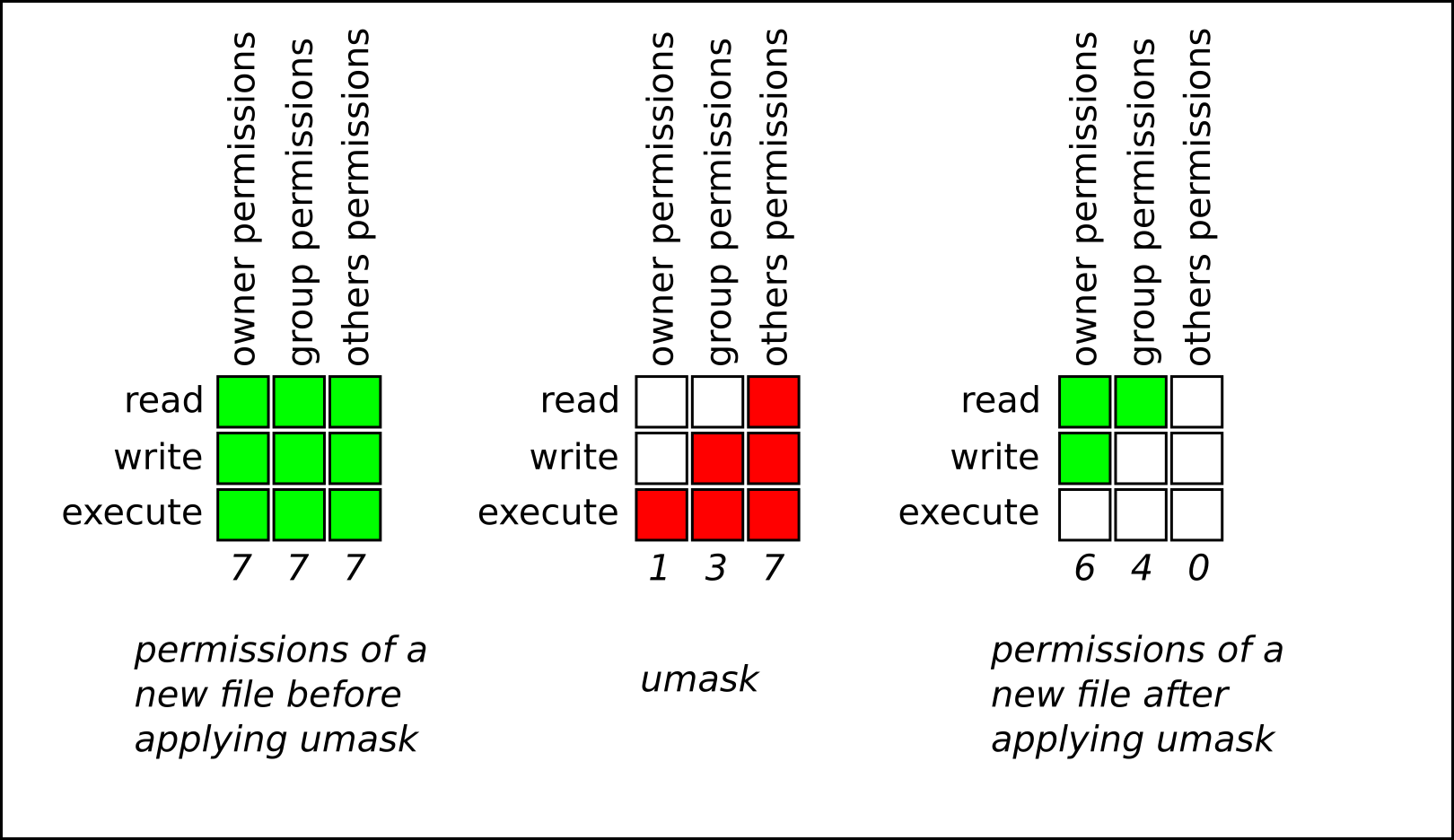


Chapter 10 Managing File Permissions Red Hat Enterprise Linux 8 Red Hat Customer Portal
To set file permissions, however, you'll need to click on the arrow next to the "Sharing & Permissions" option This will display a list of accounts or user groups on your Mac, with access levels shown under the "Privilege" categoryChmod 755 /path/to/file chmod 700 Everything for owner only This command will give read, write and execute permission to the owner Group and others will have no permissions, not even read chmod 700 /path/to/file chmod 666 No one executes To give owner, group and everyone else read and write permission on file chmod c 666 /path/to/fileThe symbolic permissions of the files and folders in your home directory are displayed, as shown below Type chmod 755 foldername, and then press Return This changes the permissions of the folder to rwxrxrx When it comes to using the ls and chmod commands, practice makes perfect Try modifying the permissions on a couple of sample files
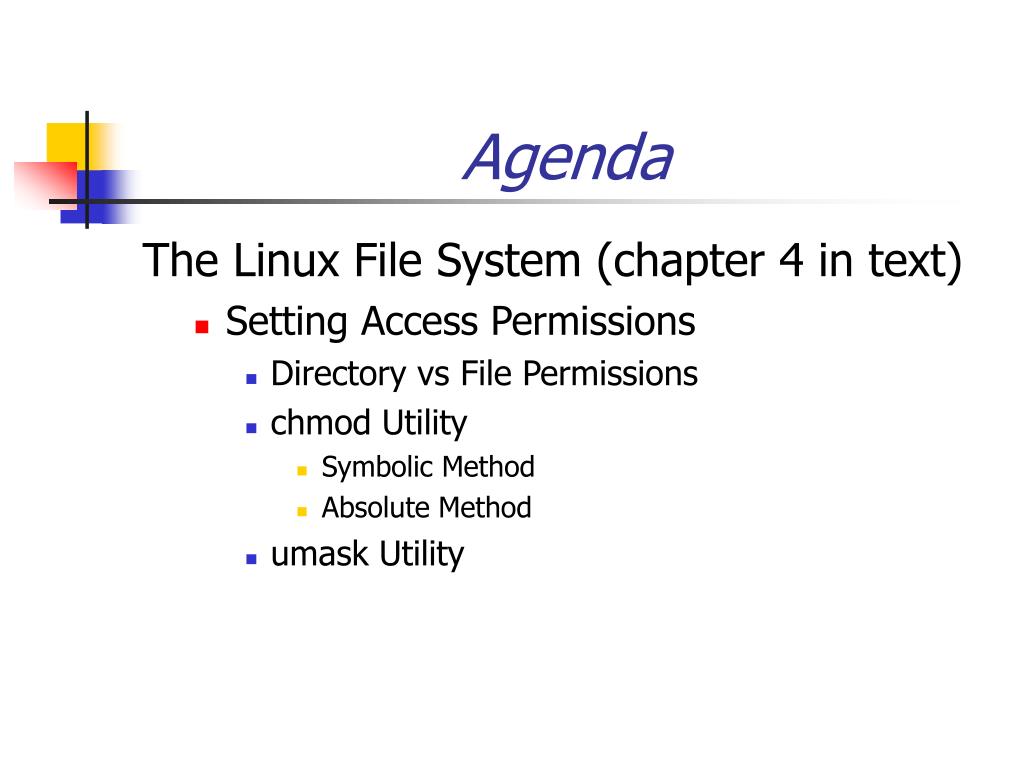


Ppt Agenda Powerpoint Presentation Free Download Id



Unix Permissions File Permissions In Unix With Examples
Note The chmod command can accept numeric integers, such as 0664, which relate to user permissions See this to help create these, if you wish I will cover using chmodOthers can read only" chmod R 755 myfiles Recursively (R) Change the permissions of the directory myfiles, and all folders and files it contains, to mode 755 User can read, write, and execute;Chmod permission file_name There are two ways to define permission using symbols (alphanumerical characters) using the octal notation method;
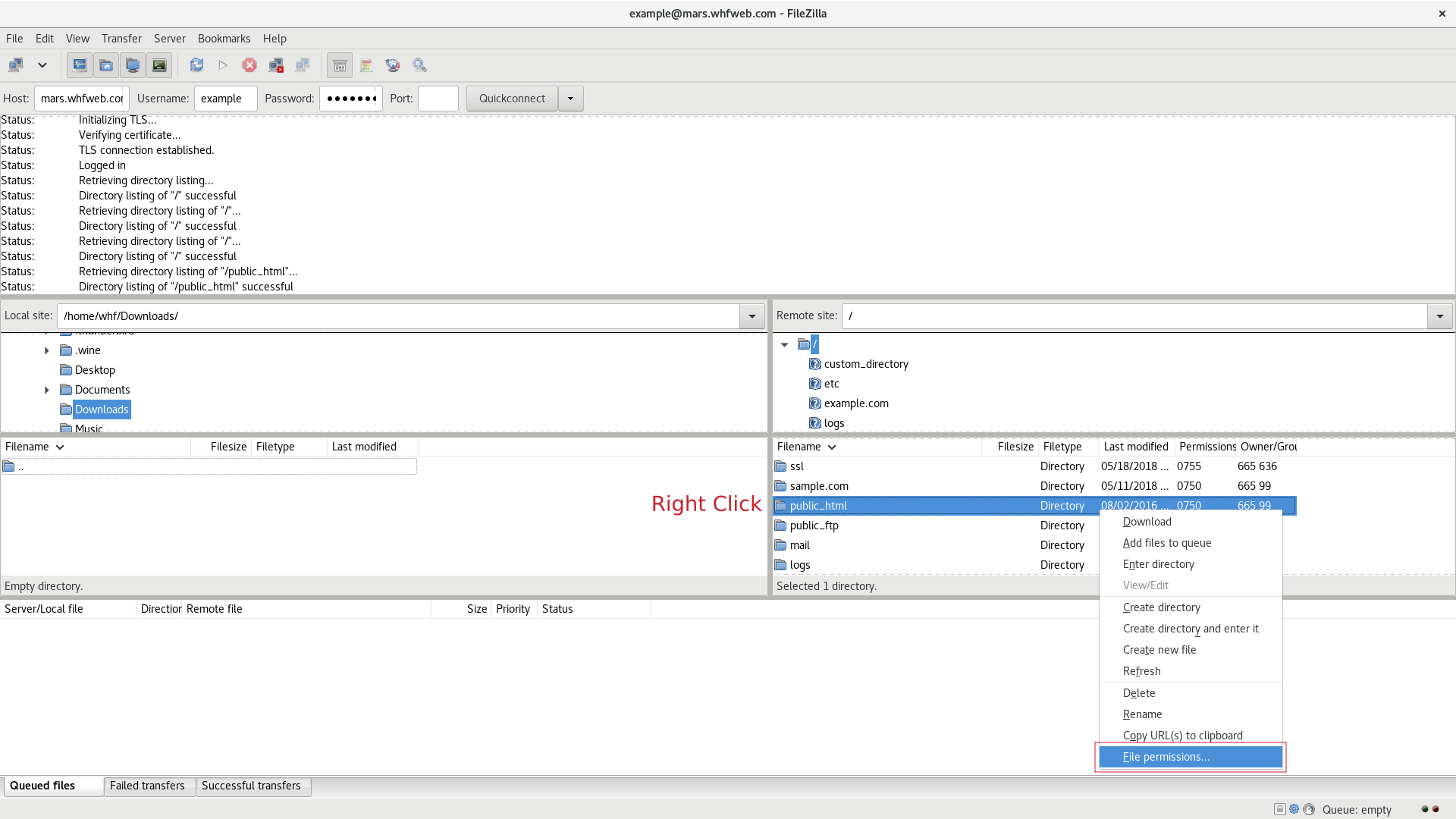


Change Permissions Of Files And Folders In Filezilla In Your Linux Hosting



Getting Started With File Permissions
I'm logged into my Linux file server as "user1", in bash I've got an ext4 volume /z/ in which all of the files are in group and owned by "sambapublic" I want to access and manipulate the files within /z/ directly from bash (mv, cp, rm, and so on), bypassing samba I did sudo usermod a G sambapublic user1 and sudo chmod R gw /z/* StillIn Linux, you will often need to make use of the chmod command Chmod stands for "Change Mode" and is used to modify the permissions of files and directories in a Linux based system By using this command, we can set the read, write, and execute permissions for all three of the permission groups (Owner, Group and Other) in Linux The command is relatively simple to use and involves usingChmod rwx filename to add permissions chmod rwx directoryname to remove permissions chmod x filename to allow executable permissions chmod wx filename to take out write and executable permissions Note that "r" is for read, "w" is for write, and "x" is for execute This only changes the permissions for the owner of the file



How To Assign Permissions To Files And Folders In Cpanel Cpanel Blog



More About Linux File Permissions
Chmod 755 /path/to/file chmod 700 Everything for owner only This command will give read, write and execute permission to the owner Group and others will have no permissions, not even read chmod 700 /path/to/file chmod 666 No one executes To give owner, group and everyone else read and write permission on file chmod c 666 /path/to/fileChmod Modifies File Permissions In Linux, who can do what to a file or directory is controlled through sets of permissions There are three sets of permissions One set for the owner of the file, another set for the members of the file's group, and a final set for everyone else The permissions control the actions that can be performed on the file or directoryView (u)ser, (g)roup and (o)thers permissions for chmod 754 (chmod arwx,gw,owx) or use free online chmod calculator to modify permissions easily CHMOD Calculator Chmod 754 After changing a file's mode to 754 the file's mode will be displayed in Unix style file lsting as rwxrxr
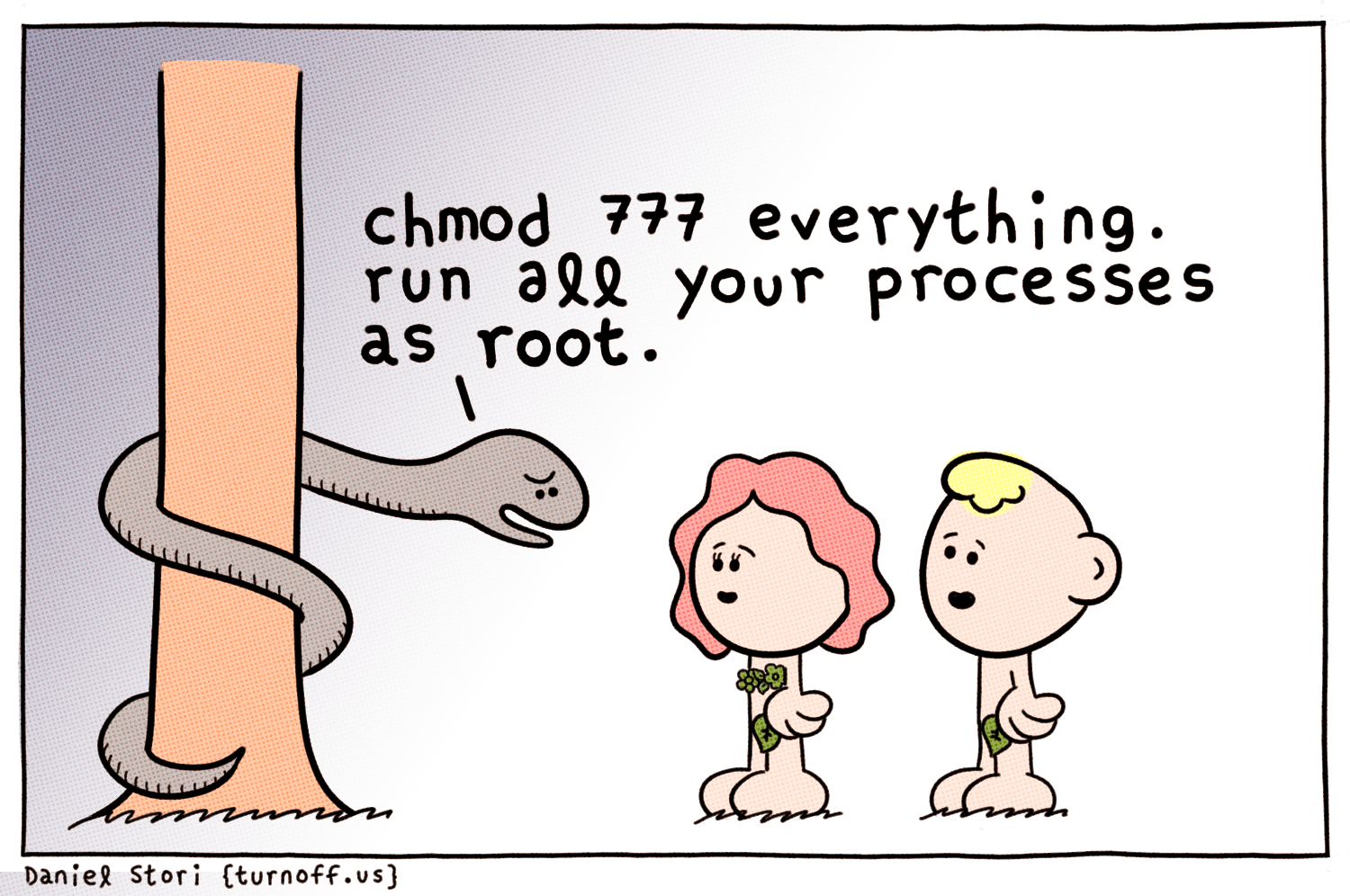


Chmod 777 Comic Dzone Security



Cit 333 Operating System Files And Directory Commands File Permissions Command Chmod Part 3 Youtube
Therefore, full permissions for everyone on the system would look likerwxrwxrwx In Linux, files and directories are treated similarly The main difference between access rights for files and directories is that the x permission on a file grants permission to execute it, where on a directory, it grants permission to enter it 4To change file permissions, you need the chmod command, which stands for "change the mode" The command syntax is chmod mode filename Changing file permissions of the files and folders you own doesn't require root user privileges You only need it when you're working with things outside your account You can use either su or sudoChange the permissions of the pem file so only the root user can read it # chmod 400 ~/ssh/ec2privatepem Create a config file # vim ~/ssh/config Enter the following text into that config file Host *amazonawscom IdentityFile ~/ssh/ec2privatepem User ec2user Save that file



Chmod Easy File Access Permissions And Modification In Linux 5 0 Raviolican



Managing File Permissions And Ownerships Network Engineer
Chmod file has metadata Chmod will change or add metadata depending on the file's already existing metadata Please keep in mind that you cannot give yourself more access than what you have on Windows, even if the metadata says that is the case For example, you could set the metadata to display that you have write permissions to a file usingChange the permissions of the pem file so only the root user can read it # chmod 400 ~/ssh/ec2privatepem Create a config file # vim ~/ssh/config Enter the following text into that config file Host *amazonawscom IdentityFile ~/ssh/ec2privatepem User ec2user Save that fileFile Manipulation #1) chmod Change file access permissions Description This command is used to change the file permissionsThese permissions read, write and execute permission for owner, group, and others Syntax (symbolic mode) chmod ugoa=mode file The first optional parameter indicates who – this can be (u)ser, (g)roup, (o)thers or (a)ll



Chmod And Permissions Directory Computing Computer File
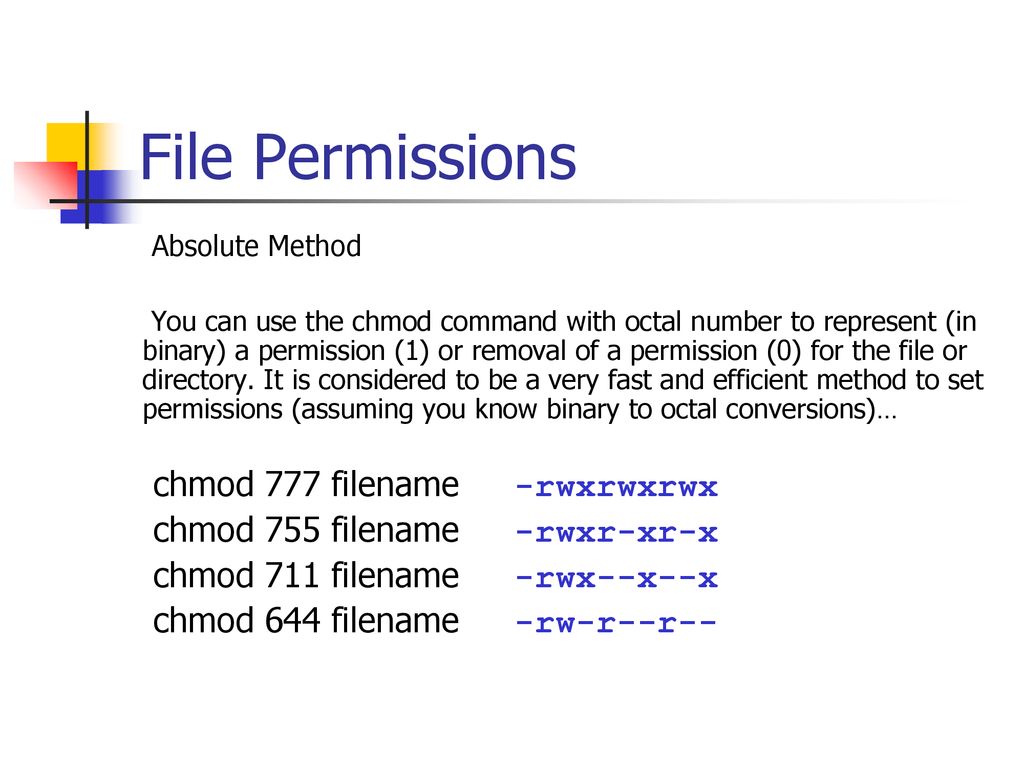


Bif703 File Permissions Ppt Download
Understanding file permissions for chmod and chown command One can use file permissions to control access to their files Sysadmins can enforce a security policy based upon file permissions All files have three types Owner – Person or process who created the fileLinux File Permission chmod Command in Linux Linux File Permission Introduction to Linux File Permission Linux file permission is a very important aspects in terms of security issues for the system administrator of Linux Operating System Actually, chmod Command in Linux plays a greater role to keep all the files and directories of the system safe and secure so that no unauthorized personThe permissions the resulting file or directory should have For those used to /usr/bin/chmod remember that modes are actually octal numbers You must either add a leading zero so that Ansible's YAML parser knows it is an octal number (like 0644 or ) or quote it (like '644' or '1777' ) so Ansible receives a string and can do its own


Set Permissions On Files Directories Using Chmod In Ubuntu Techpiezo



Chmod Calculator Takes The Hassle Out Of Directory Permissions Techfruit
File permissions Use the chmod command to set file permissions The chmod command uses a threedigit code as an argument The three digits of the chmod code set permissions for these groups in this order Owner (you) Group (a group of other users that you set up) World (anyone else browsing around on the file system)Chmod Changes file permissions chown Changes the file owner groups Checks the users in a group useradd Adds a user to a group chgrp Changes the file group You can use the –l switch to check permissions them when you use the ls command to list the files in a folder But what if you want to change them?Therefore, full permissions for everyone on the system would look likerwxrwxrwx In Linux, files and directories are treated similarly The main difference between access rights for files and directories is that the x permission on a file grants permission to execute it, where on a directory, it grants permission to enter it 4
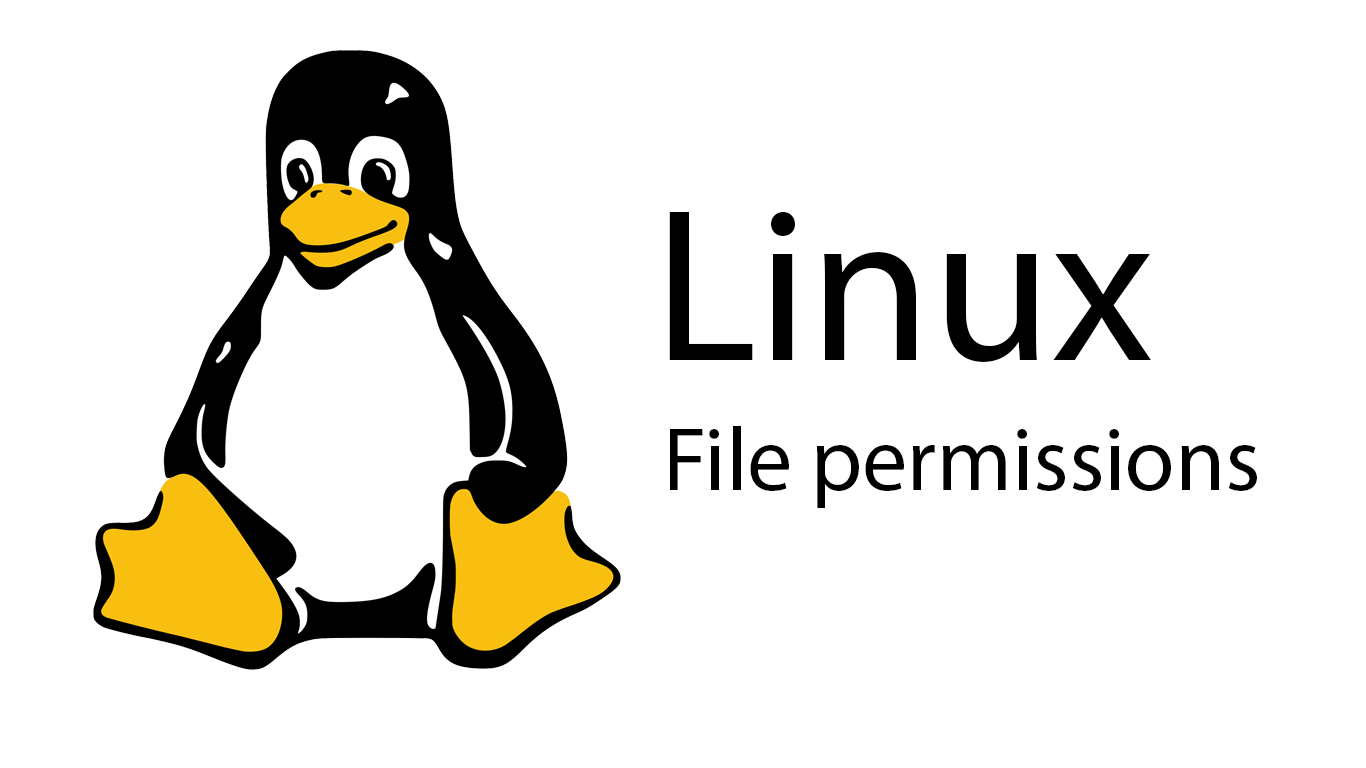


How To Change File Permissions In Linux Skillsugar



Modify File Permissions With Chmod Linode
File permissions Use the chmod command to set file permissions The chmod command uses a threedigit code as an argument The three digits of the chmod code set permissions for these groups in this order Owner (you) Group (a group of other users that you set up) World (anyone else browsing around on the file system)Note The chmod command can accept numeric integers, such as 0664, which relate to user permissions See this to help create these, if you wish I will cover using chmodDefine File Permission with Symbolic Mode To specify permission settings using alphanumerical characters, you'll need to define accessibility for the user/owner (u), group (g), and others (o)


I Made This Chmod Cheat Sheet And Thought It Might Be Useful Linux4noobs



Linux Command Line Cheatsheet
9 Comments Originally posted October 13, 14 Bash, Shell, Terminal, Command Line cheat sheets linux Ubuntu Set the permissions for a file or directory by using the chmod command Each row has 2 examples, one for setting that permission for a file, and one for a directory named 'dir'I'm logged into my Linux file server as "user1", in bash I've got an ext4 volume /z/ in which all of the files are in group and owned by "sambapublic" I want to access and manipulate the files within /z/ directly from bash (mv, cp, rm, and so on), bypassing samba I did sudo usermod a G sambapublic user1 and sudo chmod R gw /z/* StillTo Change File Modes Symbolically chmod R h Execute permission for files if the current (unmodified) mode bits have at least one of the user, group, or other execute bits set The X flag is ignored if the File parameter is specified and none of the execute bits are set in the current mode bits



Use Of Chmod Command In Linux Devopsdex



Linux Commands 5 File Permission Chmod Youtube
Chmod Calculator is a free utility to calculate the numeric (octal) or symbolic value for a set of file or folder permissions in Linux servers How to use Check the desired boxes or directly enter a valid numeric value (eg 777 ) or symbolic notation (eg rwxrwxrwx ) to see its value in other formatsHow to restore root directory permission to default?Chmod g=rw /path/to/file Will set group permissions to readwrite on the file;



Solved What Is The Right Chmod Or File Permissions General Topics Prestashop Forums



Directory How Can I Change Permissions Of A Folder Including Its Enclosed Files And Subdirectories Ask Ubuntu
Group members and other users can read and execute, but cannot write– The flag removes the file permissions from a specified user This adds/appends permissions to a specified user = This assigns specified users distinct permissions and removes the previous permissions of the user segment Let's have a look at a few examples Example 4) Assign read permissions to a file $ chmod o=r filenameRule #1 If you are not comfortable with command lines, do not run any command as root Running chmod R 777 / as root will break your system Running rm rf / as root will result in a disaster!
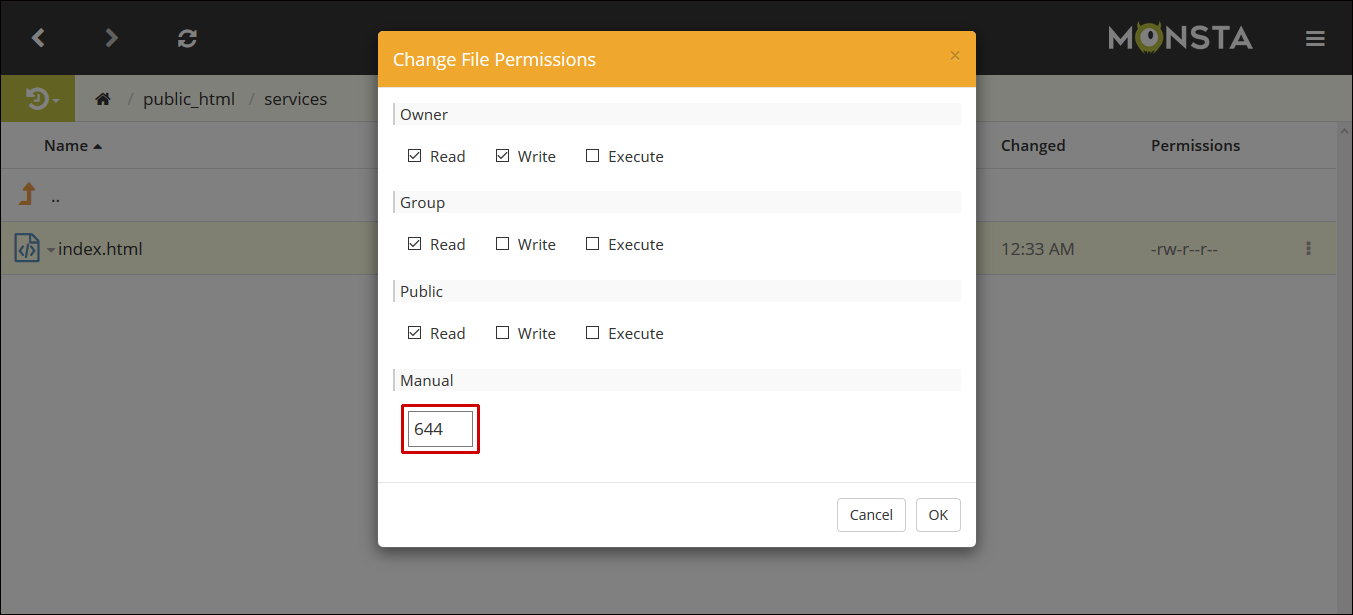


How To Change Permissions Chmod Monsta Ftp Monsta Ftp



Unix Linux Permissions Calculator For Android Apk Download
For example, Webserver file permission is 775 chmod 777When you set the permission 777, in this case, you allow permission to everyone read, write, and execute With this permission, anyone can make changes or copy files It is not advisable to set this kind of permission to the webserver or any certain filesExecute rights will be removed from Group if they existed previously, and permissions for Owner and Others will remain theBecause of the potential for abuse, this file must have strict permissions read/write for the user, and not writable by others It may be groupwritable provided that the group in question contains only the user Which would mean either chmod 644 ~/ssh/config or chmod 664 ~/ssh/config if the file group contains only your user


Chmod Numerical Modes 3 Challenge User Accounts And Security Itstime To Master L Imod Numerical Modes By Completing The Php Following Tasks Course Hero



File Permissions
Therefore, full permissions for everyone on the system would look likerwxrwxrwx In Linux, files and directories are treated similarly The main difference between access rights for files and directories is that the x permission on a file grants permission to execute it, where on a directory, it grants permission to enter it 4Chmod is a very helpful command to change the file permissions of a file or a folder in any UNIXlike operating system Let's say you are currently in the root directory of your Unixlike system and you want to change the file permissions of a folder and all of the other files and subdirectories present inside that folderThere are several ways to apply a chmod to files recursively on Linux One of the easiest ways is to use the find command to select the files and then run the chmod command with the exec switch Change into the directory with cd, before you run the find command Chmod Example 1 cd /var/www/mydirectory find type f exec chmod 750 {}


Q Tbn And9gcs J72hjomdluhqe6xjivy M6yrjmkqx9x3z3ps Rpnb8by3w7z Usqp Cau
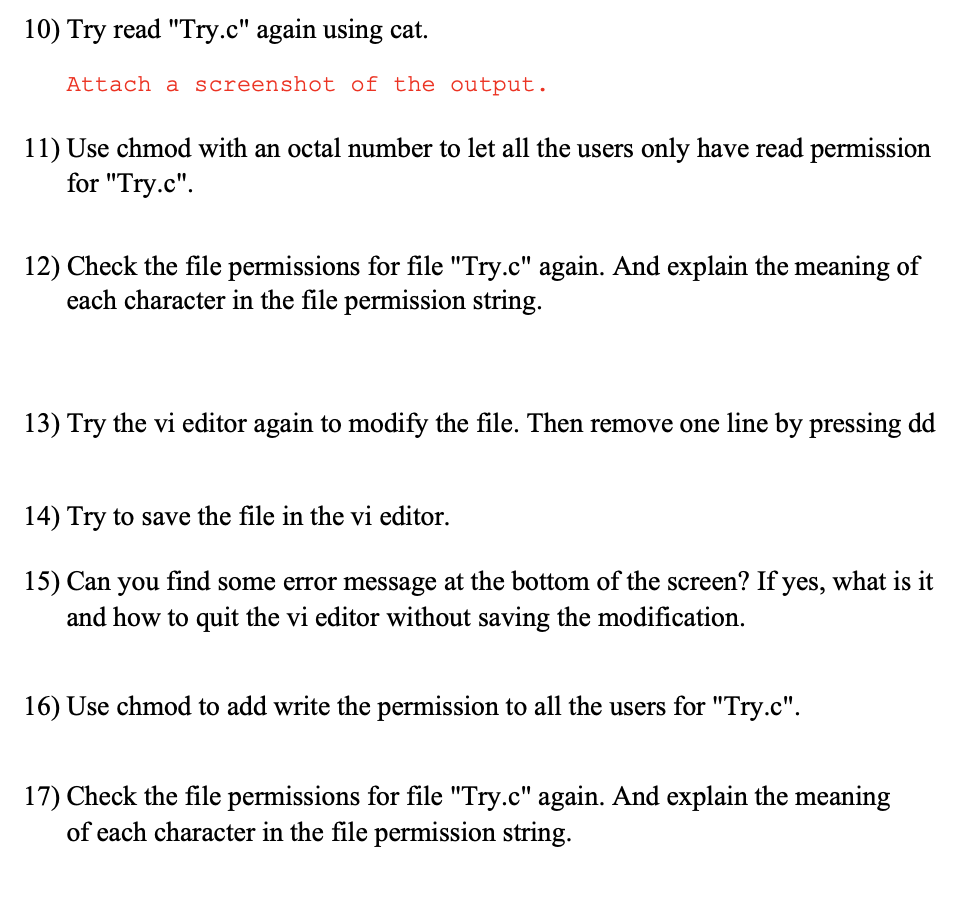


Solved Part 3 Permissions For Files Follow The Instructi Chegg Com
Chmod file has metadata Chmod will change or add metadata depending on the file's already existing metadata Please keep in mind that you cannot give yourself more access than what you have on Windows, even if the metadata says that is the case For example, you could set the metadata to display that you have write permissions to a file using chmod 777, but if you tried to access that file you would still not be able to write to it This is thanks to interopability, as any read or writeChmod is a very helpful command to change the file permissions of a file or a folder in any UNIXlike operating system Let's say you are currently in the root directory of your Unixlike system and you want to change the file permissions of a folder and all of the other files and subdirectories present inside that folderChmod Changing The File Permissions To change the file permissions at all, you must be the owner of the file or you must be the root user The root user can change any permission bit This may not be true of the owner The one bit that the owner may not be able to switch on is the SGID bit



Change File And Folder Permission On Ubuntu Chmod Chown Command In Linux Youtube


2
I'm logged into my Linux file server as "user1", in bash I've got an ext4 volume /z/ in which all of the files are in group and owned by "sambapublic" I want to access and manipulate the files within /z/ directly from bash (mv, cp, rm, and so on), bypassing samba I did sudo usermod a G sambapublic user1 and sudo chmod R gw /z/* StillExamples chmod 644 filehtm Set the permissions of filehtm to "owner can read and write;The chmod command changes the access permissions of files and folders The chmod command, like other commands, can be executed from the command line or through a script file If you need to list a file's permissions, use the ls command Mykyta Dolmatov / Getty Images Command Syntax


File Permissions Chmod Page 2 Linux Org
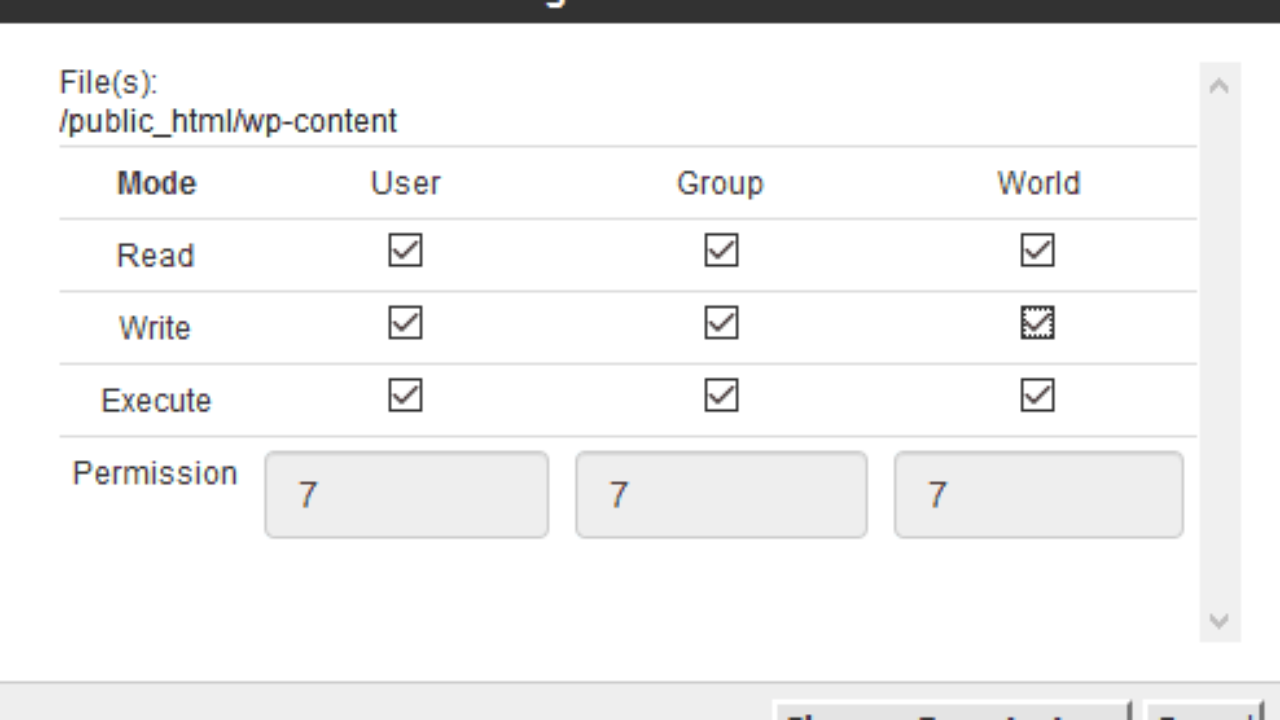


What Is Chmod 777 How To Change File Permissions For Linux
On computer file systems, different files and directories have permissions that specify who and what can read, write, modify and access themThis is important because WordPress may need access to write to files in your wpcontent directory to enable certain functions Permission Modes # Permission Modes 7 5 5 user group world rwx rx rx 421 401 401 = 755For executable onesHow to Set File Permissions Using `chmod' Files To determine the mode (or permission settings) of a particular file, use the command `ls lg filename' Directories The permission scheme described above also applies to directories For a directory, whoever has `read' More Information For more


Webmin Change File Permissions Chmod With The File Manager Webengine Cms Support Forum
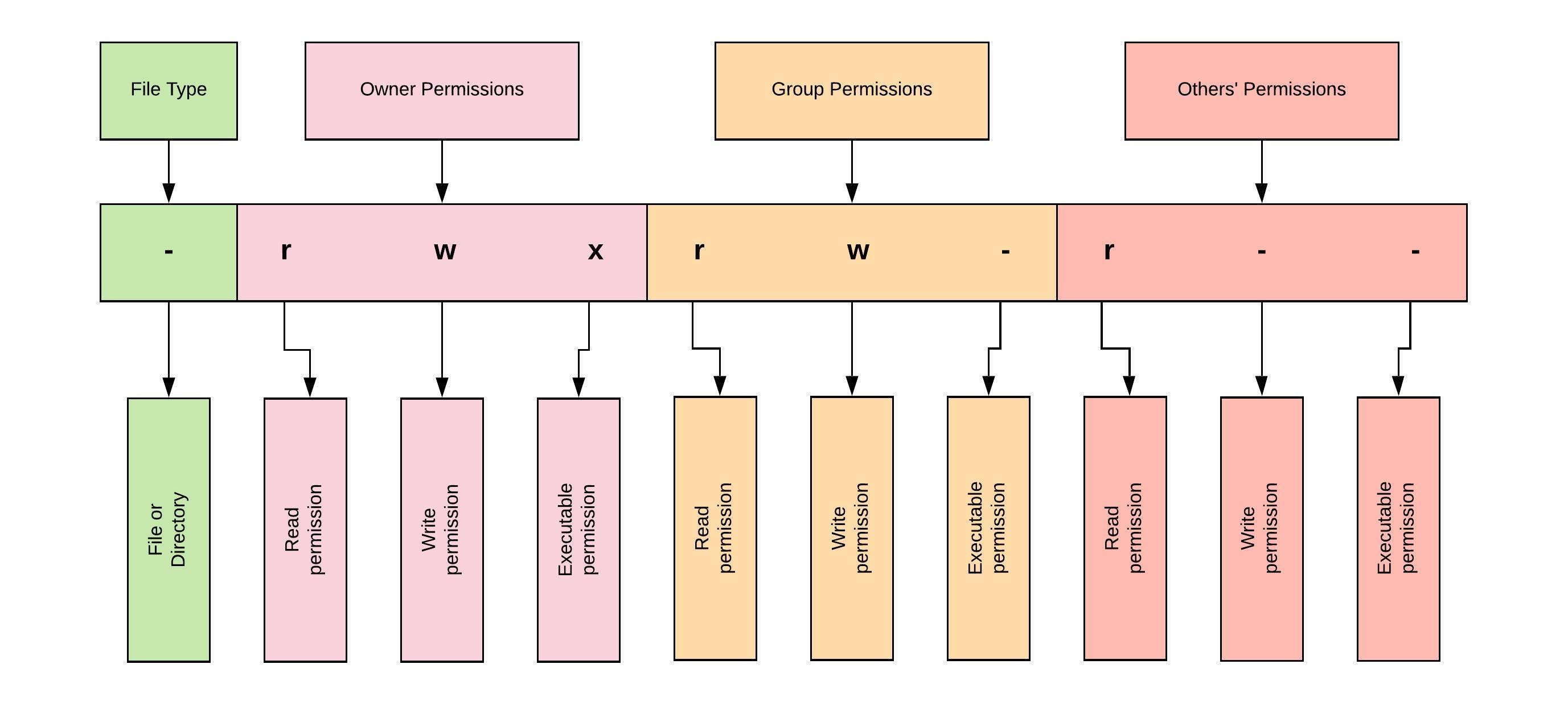


Linux File Permissions And Ownership By Udara Bibile Level Up Coding
755 Files with permissions set to 755 are readable and executable by everyone, but only writeable by the file/folder owner 777 Files with permissions set to 777 are readable, writeable, and executable by everyone Don't use this set of permissions, for security reasons, on your web server unless absolutely necessary Typically, folders and files within your web server have already beenLet's add write permission to group bhinav@ETHICALHACKX~/dir1$ chmod gw file2 abhinav@ETHICALHACKX~/dir1$ ls l file2 file1 rwxrr 1 abhinav abhinav 0 kax 28 1908 file1rwrwr 1 abhinav abhinav 0 kax 28 1942 file2 Remove Read permission from user abhinav@ETHICALHACKX~/dir1$ chmod ur file1 abhinav@ETHICALHACKX~/dir1$ cat file1 cat file1 Permission denied abhinavChmod orwx /path/to/file Will remove read, write, and execute rights from Others, but will not modify other existing permissions on the file;
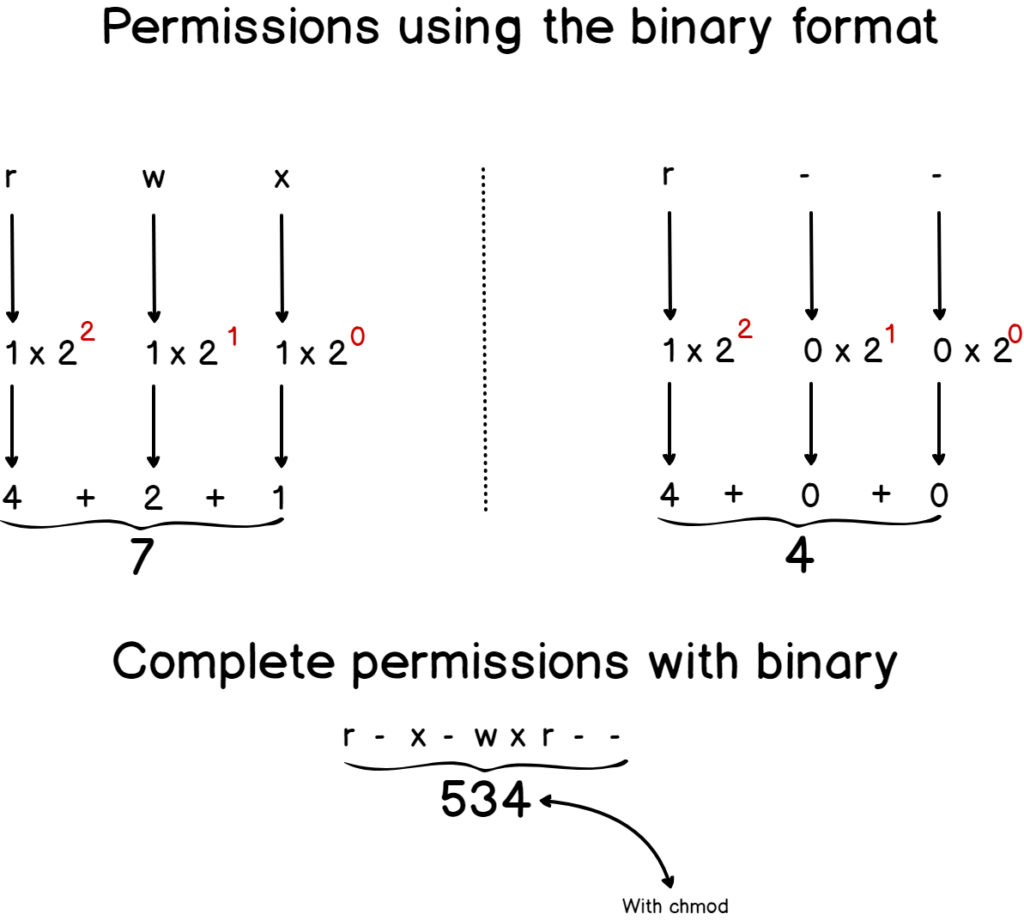


Linux File Permissions Complete Guide Devconnected



Chmod File Permissions In Linux Unix Linux Angular Angular Js Jquery Php Mysql And Web Development Tutorials
To change the permissions of a file, one uses the chmod command, with the following syntax chmod referencesoperatormodes filename The references are shorthand (u, g, or o) for each class The operator determines whether to add (), remove () or explicitly set (=) the particular permissionsLet's add write permission to group bhinav@ETHICALHACKX~/dir1$ chmod gw file2 abhinav@ETHICALHACKX~/dir1$ ls l file2 file1 rwxrr 1 abhinav abhinav 0 kax 28 1908 file1rwrwr 1 abhinav abhinav 0 kax 28 1942 file2 Remove Read permission from user abhinav@ETHICALHACKX~/dir1$ chmod ur file1 abhinav@ETHICALHACKX~/dir1$ cat file1 cat file1 Permission denied abhinavAvoid using boundary cases, such as chmod 777 and chmod 000 Using chmod 777 gives everyone rwx permissions, and it is generally not a good practice to give full powers to all the users in a system The second case, I will leave you guys to figure out
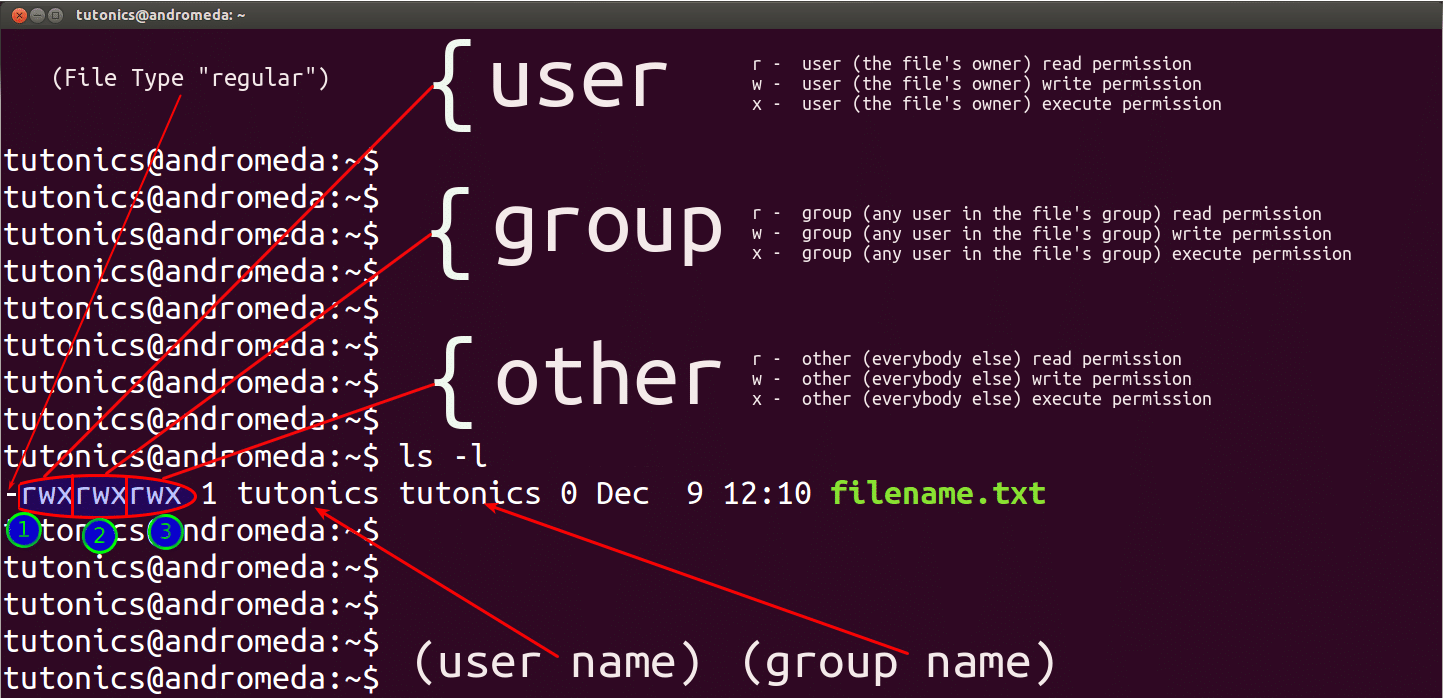


Linux File Permissions Tutorial For Beginners
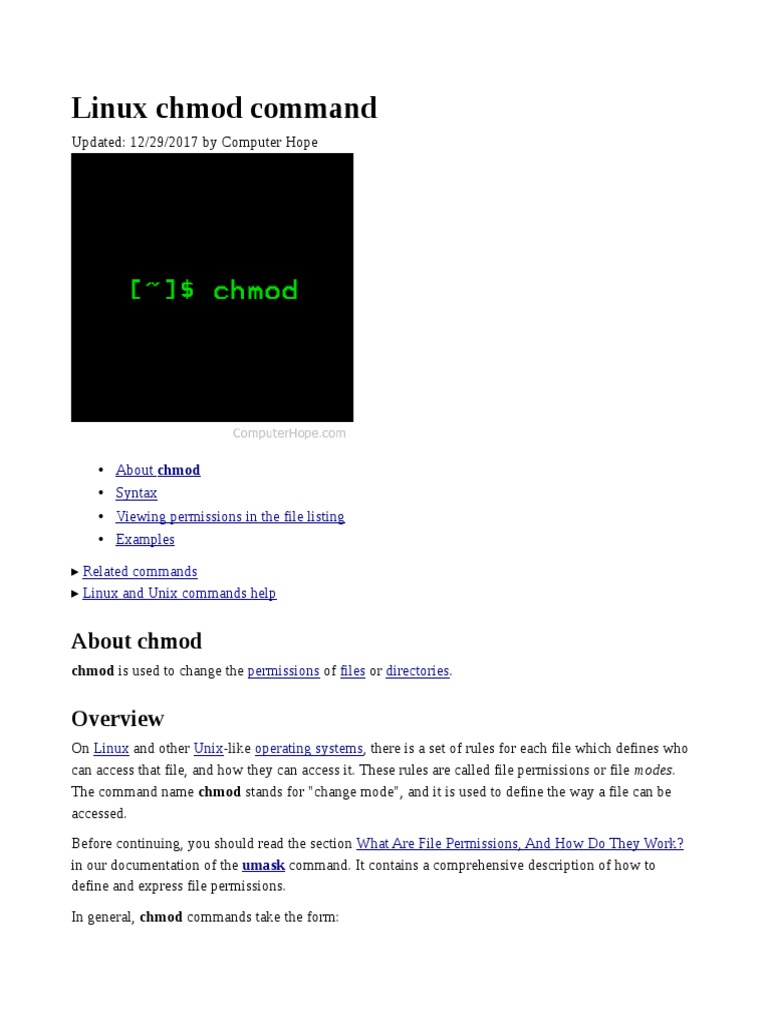


Linux Chmod Command Utility Software Computer File
Define File Permission with Symbolic Mode To specify permission settings using alphanumerical characters, you'll need to define accessibility for the user/owner (u), group (g), and others (o)Syntax chmod Example chmod ox my_file Above command removes Execute permission from the other users of the file 4 Making the Changes for All In case we add or remove some permissions for all the users (owner, group and others), we can use a notation 'a' which denotes "All users"The "chmod" Command Changing File Permissions By now, you should have a comprehensive understanding of how the Linux file permissions work, and how to understand what permissions the different user groups have for a given file or directory So with that out of the way, let's talk about changing the file permissions


Chmod Calculator Sam Solomon
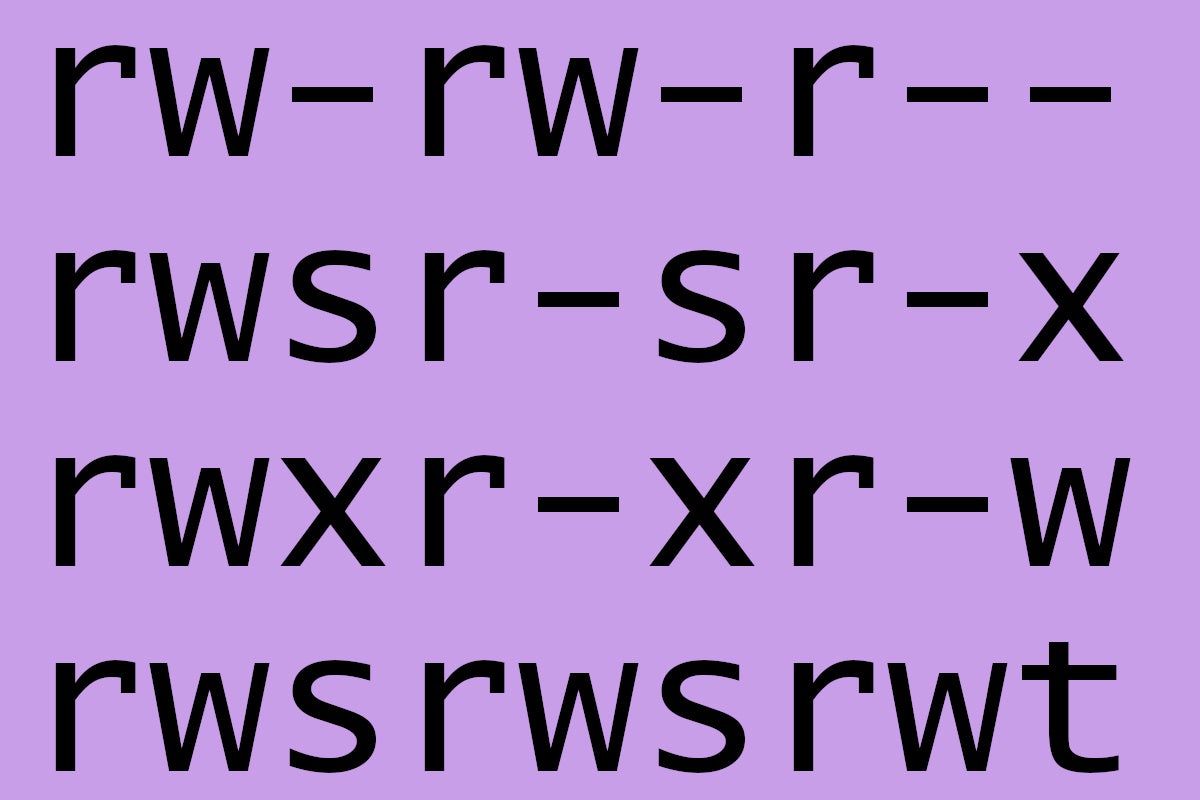


A Deeper Dive Into Linux Permissions Network World
To set all permission bits on (anyone can read/write/execute) chmod 777 scratch;



Permission Errors Drupal Answers


Linux User Group And File Permission Introduction


Christine Bresnahan Squarespace Com S Objective 104 5 Manage File Permissions And Ownership Pdf



Chmod 777 A Definitive Guide To File Permissions



How To Use File Permissions In Linux 9 Steps With Pictures



Chmod How To Set File And Directory Permission In Linux Using Chmod Youtube
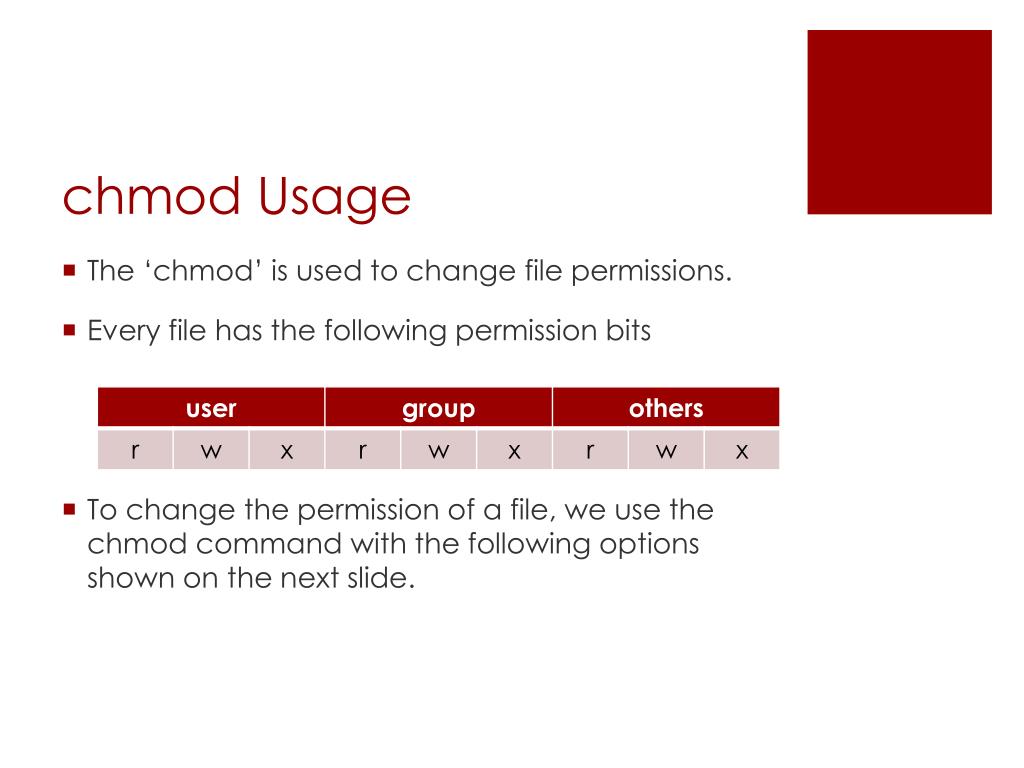


Ppt File Ownership And Permissions Powerpoint Presentation Free Download Id
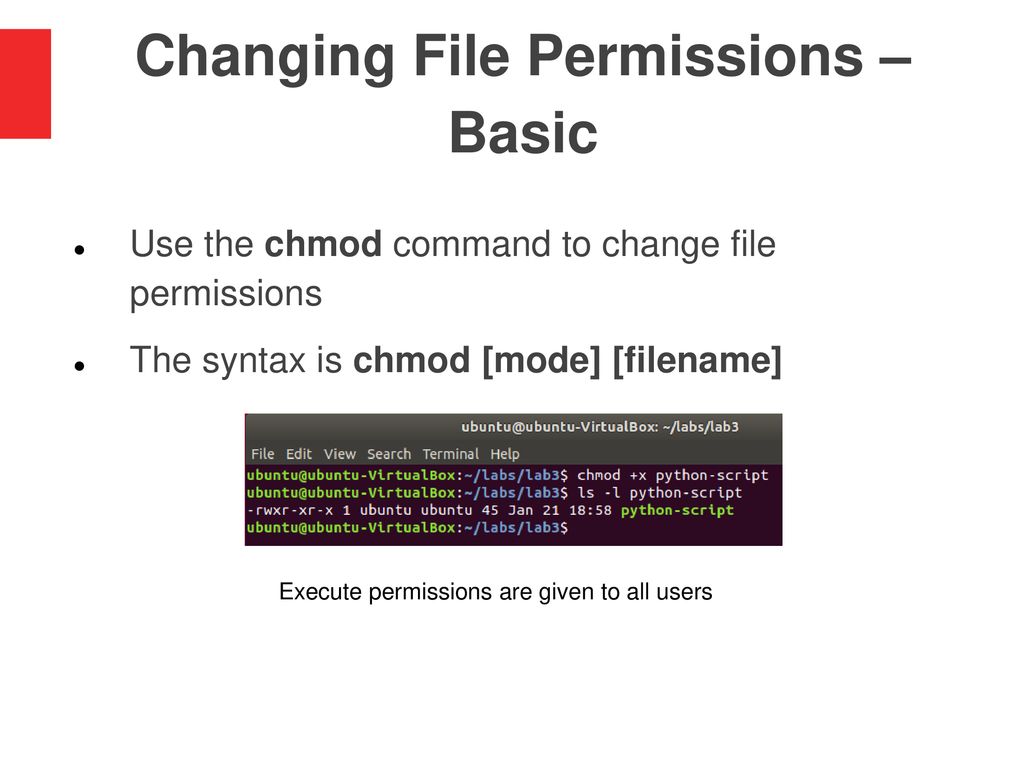


Lab 3 File Permissions Ppt Download
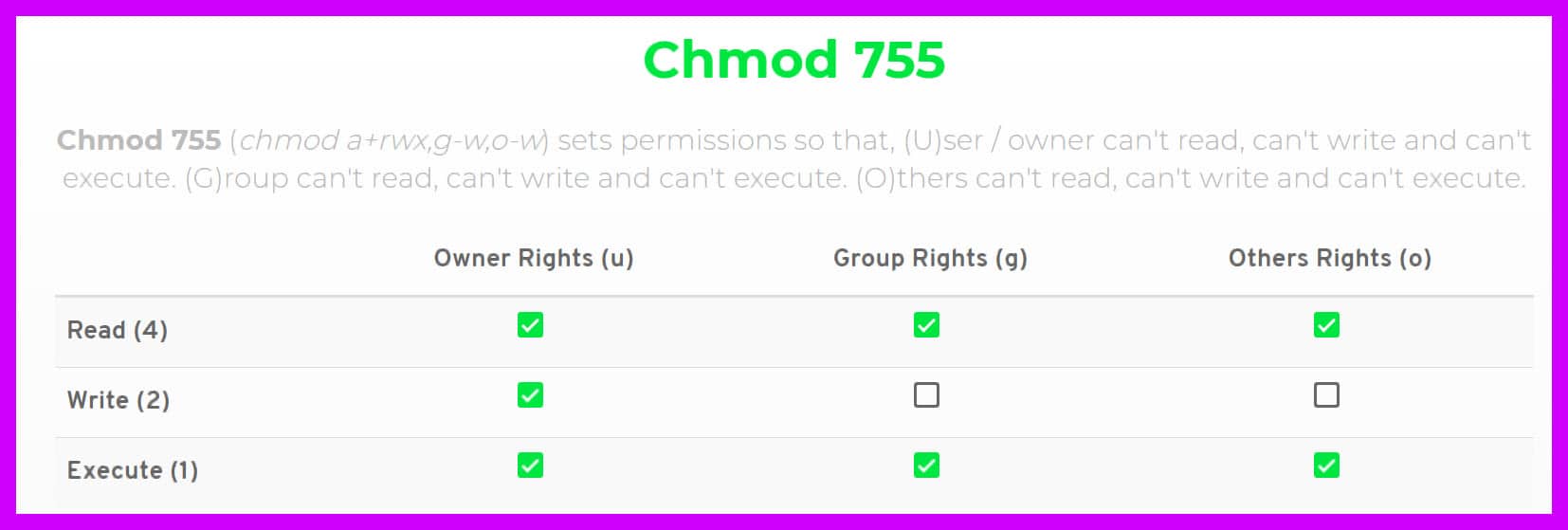


Chmod 777 A Definitive Guide To File Permissions
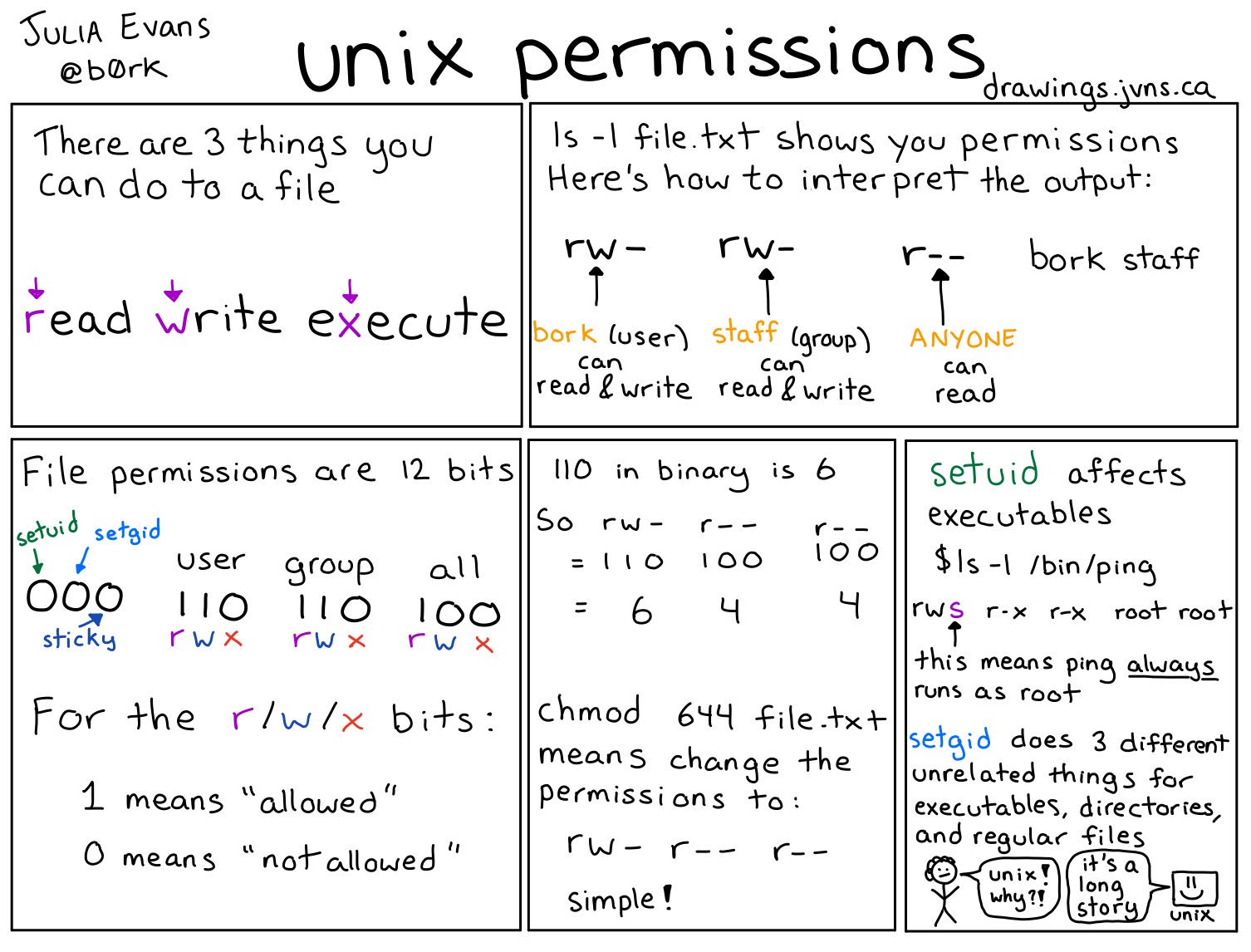


Julia Evans Unix Permissions
/GettyImages-1021092796-ea8c63ee76f84bd5bf98c4222337fbb4.jpg)


How To Use The Chmod Command In Linux



Chmod Directories And Files Problem Hosting Support Infinityfree Forum



Linux Terminal Basics Chmod File Permissions Youtube



Techtutorials Chmod Command Linux Facebook



Change File Permissions In Mac Os X Osxdaily



How To Change File And Folder Permissions Using Filezilla



How To Set File Permissions Using Chmod Unix Information Technology Management



Linux Terminal File Permissions Chmod Chown And Chgrp Linux Line Tools Thing 1
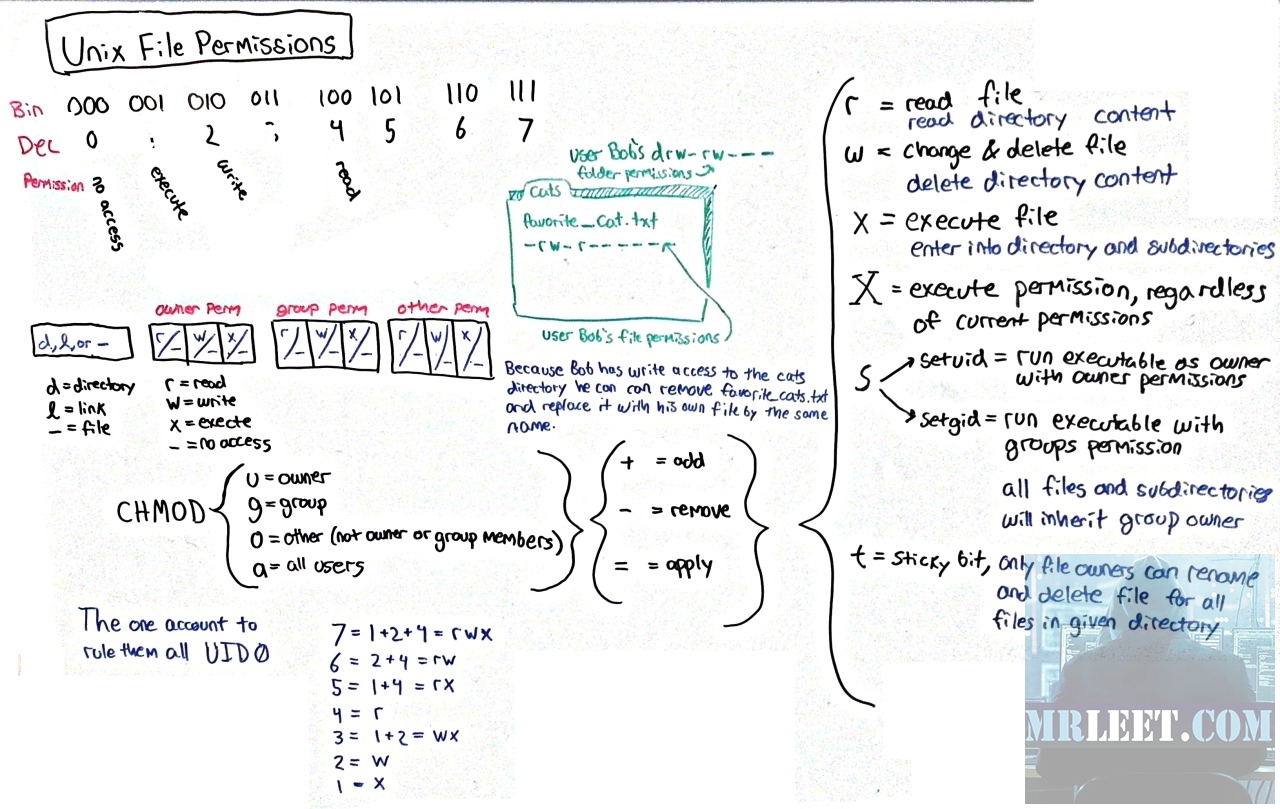


Linux File Permissions And Chmod Mrleet
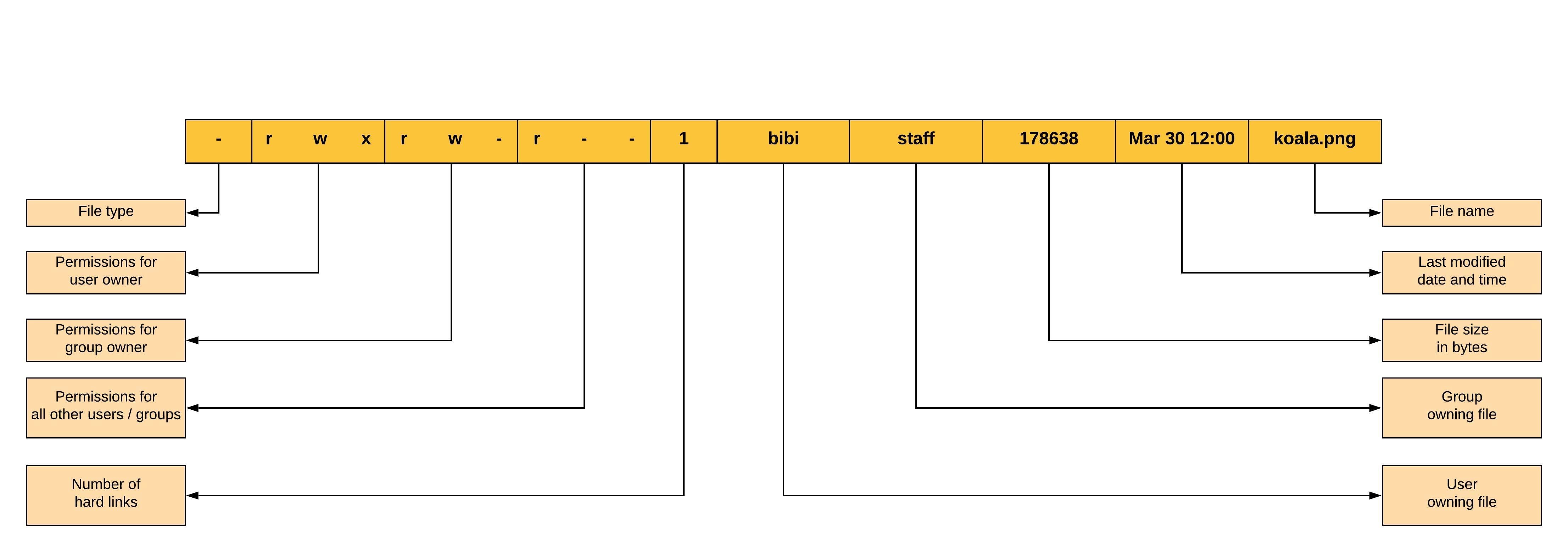


Linux File Permissions And Ownership By Udara Bibile Level Up Coding



Shell Scripting Tutorial 10 Change File Permissions Using Chmod Youtube
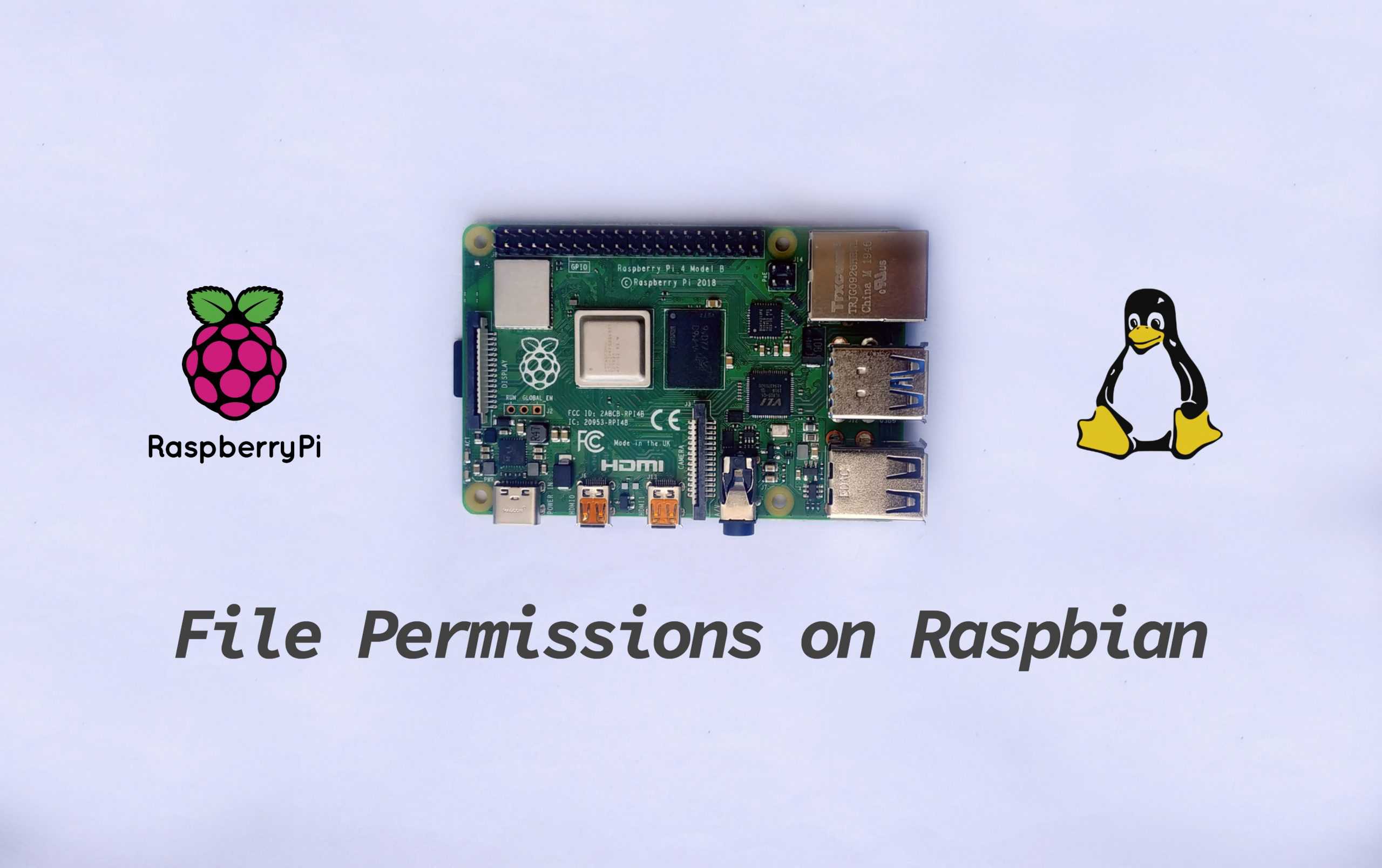


File Permissions On The Raspberry Pi Circuit Basics



Chmod 777 What Does It Really Mean Make Tech Easier
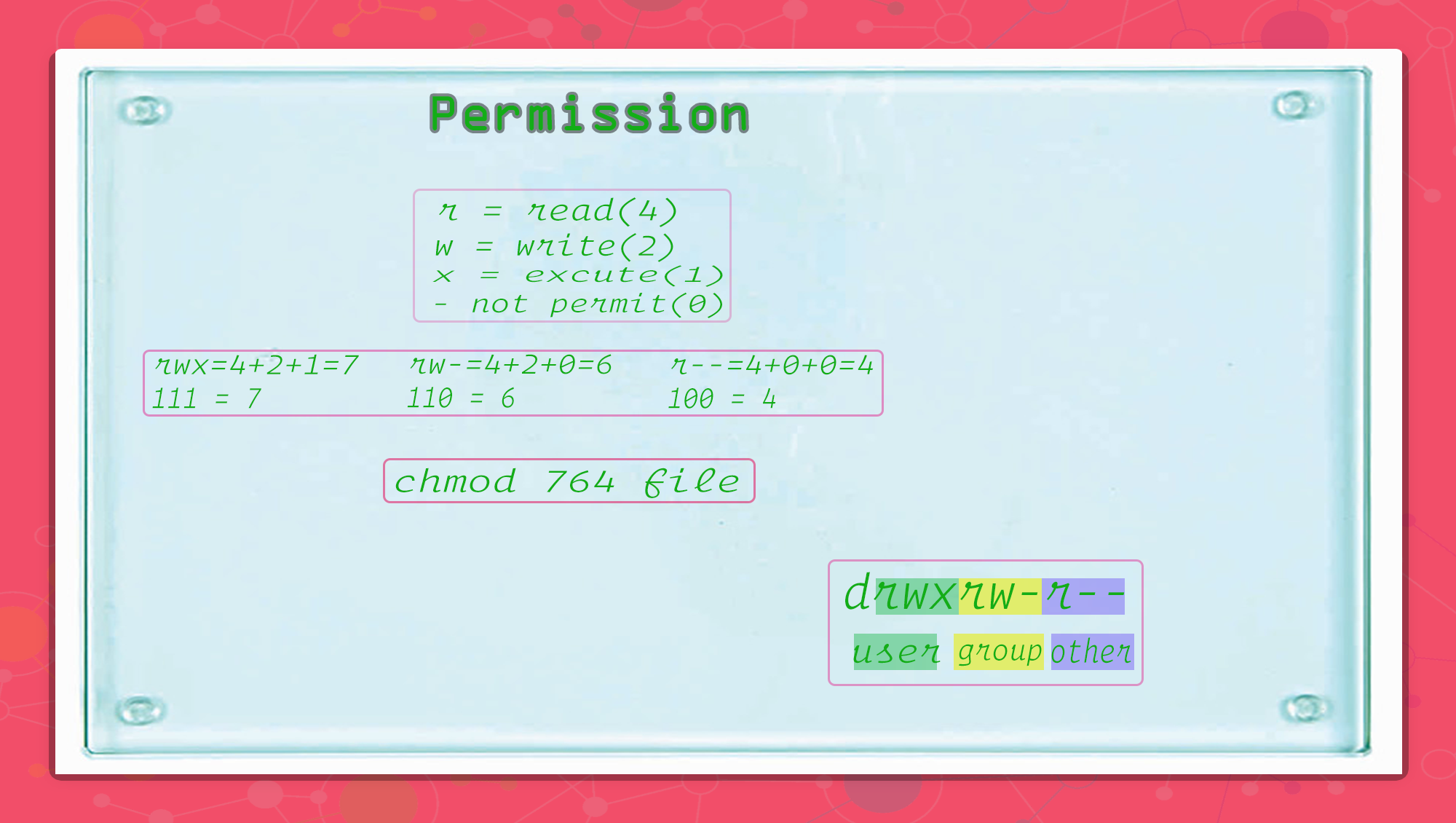


Chmod Permission Code4mk Organization



How To Use Chmod Command In Linux Explained With Examples


Q Tbn And9gcr2lfpzbutqythmvbwafnxvyggqfj7hnw6fhh Kcozkk8m5 V7o Usqp Cau



Permission Chmod


2


Simms Teach Com 12 Fall Docs Cis90 Cis90lab06 Pdf



File And Folder Permission Settings For Wordpress Folder On Linux Stack Overflow
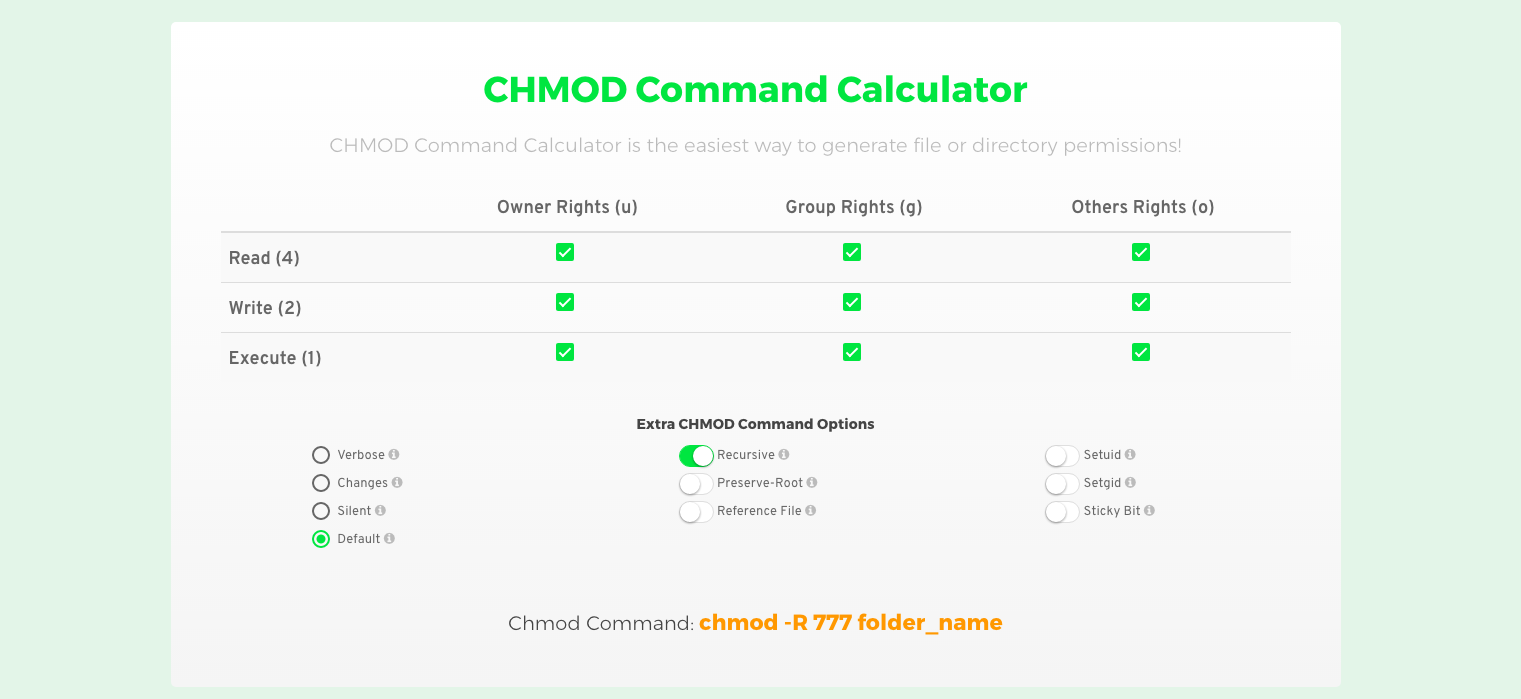


Chmod Calculator Styletheweb Com Styletheweb Com



Permission Assignment Nobody Other Than Owner Can Read The File Automated Hands On Cloudxlab



Command Line Basics File Permissions Alligator Io



Linux Rookie Basic Learning 3 File Permissions Programmer Sought



File With Strange Permissions Ask Ubuntu


2


I Made This Chmod Cheat Sheet And Thought It Might Be Useful Linux4noobs



Chmod 777 A Definitive Guide To File Permissions



How To Reset File Permissions In Wordpress Wp Engine
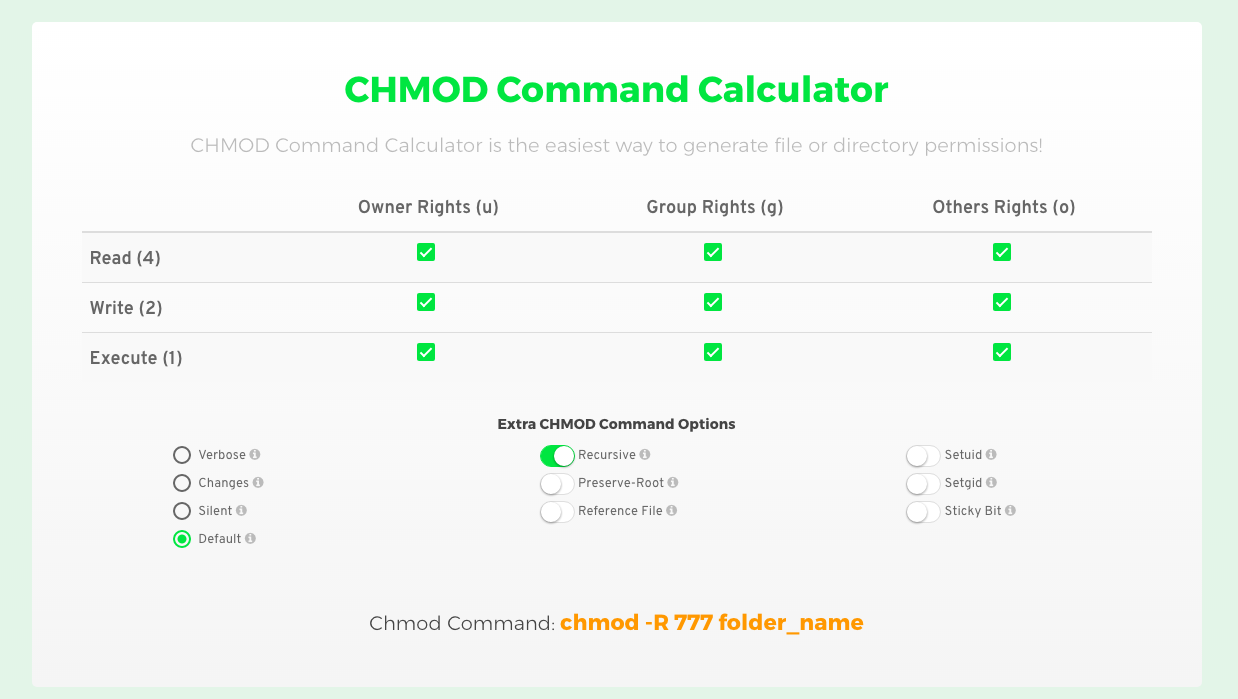


Chmod Calculator Website Awards



Give Permissions In Ubuntu Itechzo Give Permissions In Ubuntu



Quiz Worksheet Special Permissions Access Control Filesystem Attributes In Linux Study Com



Benefits Of Chmod Calculator Online Converter Online Calculator Linux Permissions



How To Manage File Permissions On Ubuntu Server 04 Dev Tutorial


Solved Codio Linux Users And Permissic X X Gt C A Codio Com Jdarwish Linux Users And Permissions Terminal Backend Guide J I Apps M Gmail Course Hero
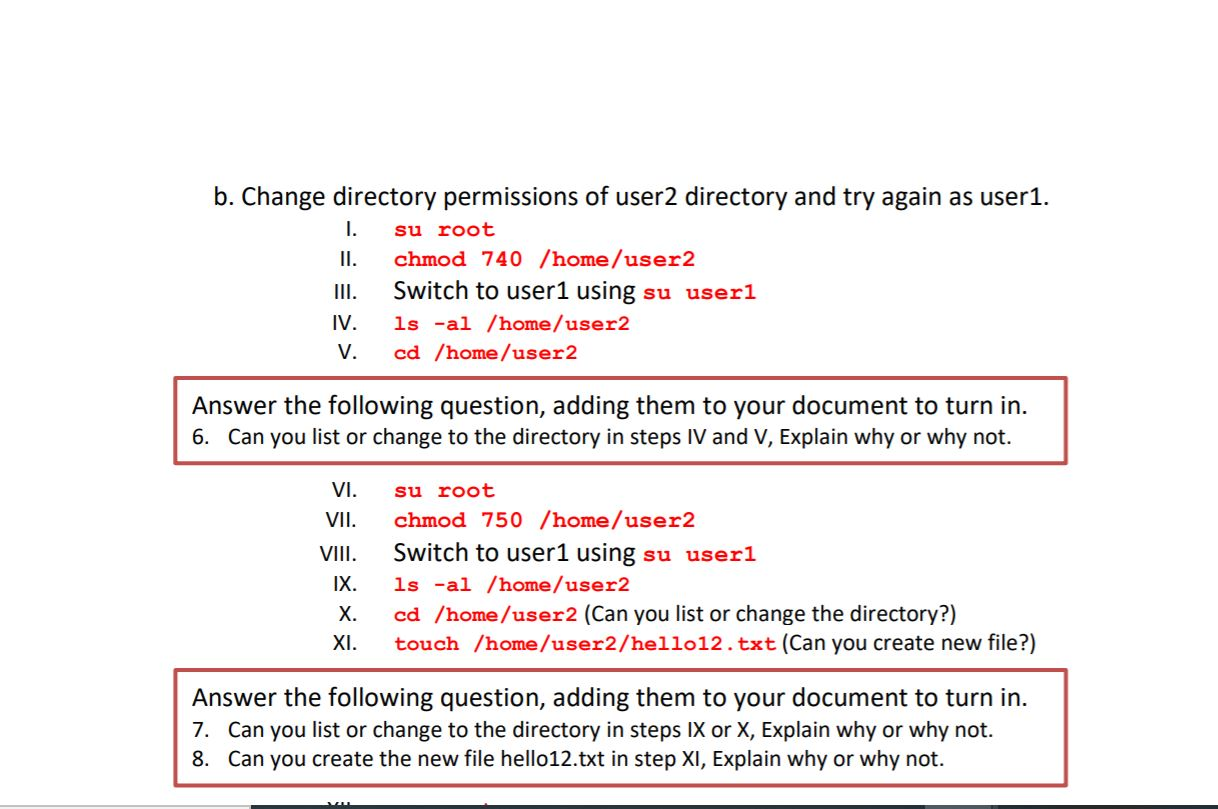


Solved B Change Directory Permissions Of User2 Directory Chegg Com



Change File Permissions Easily With Online Chmod Calculator By Chmodcalcu Issuu



Linux Chmod Recursive How To Change File Permissions Recursively



Understand Linux System File Permission



Chmod X Explained Everything You Need To Know
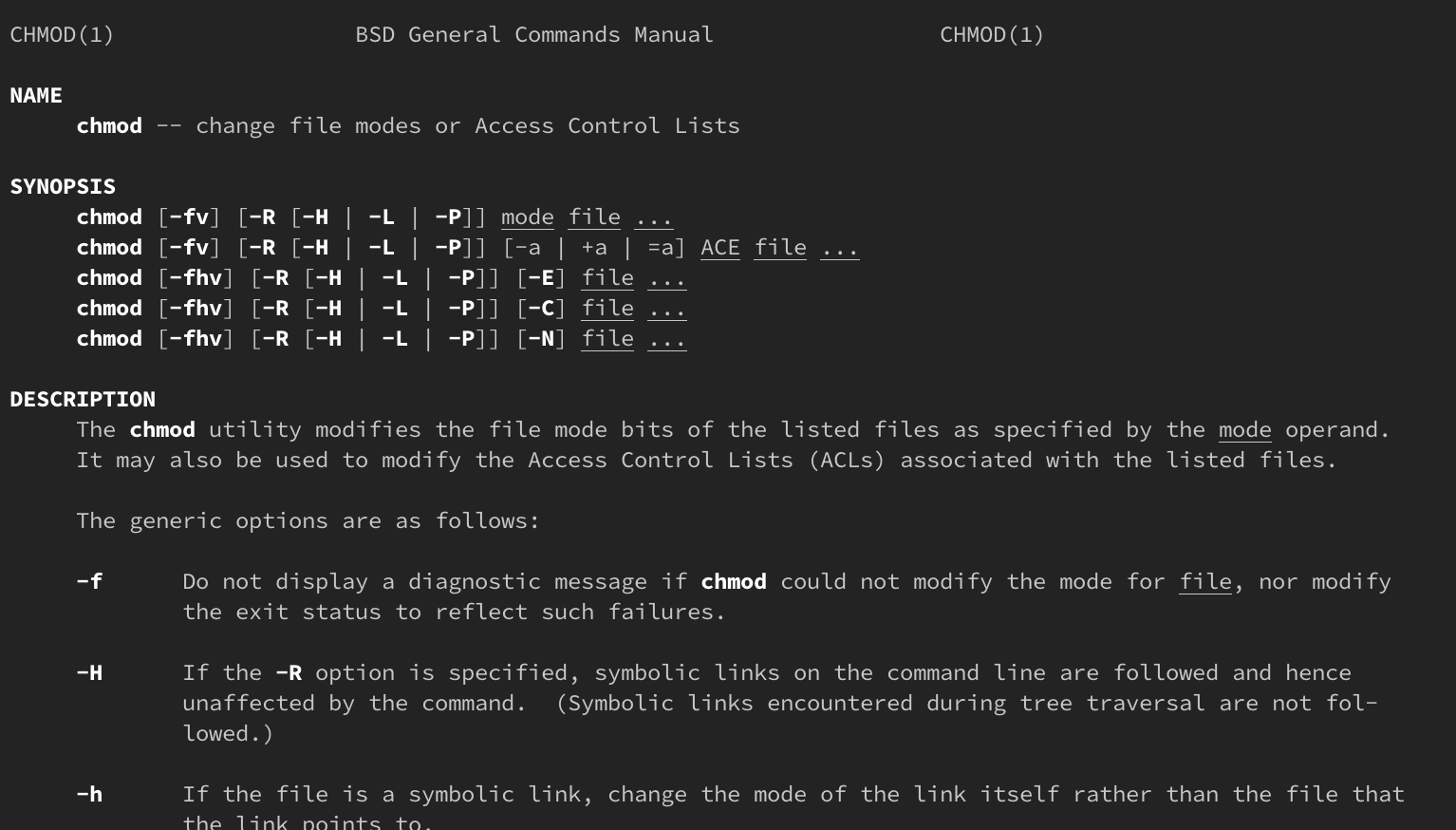


How Do Linux Permissions Work



Linux File Permissions Explained Learn Tech Tutorials



How To Modify The File S And Directories Permission In Linux Vasanth Blog



Linux Modify The File Permissions Chmod Programmer Sought



Linux Hayward Dot Click



I Need Help In Laravel 5 4 Permission Denied Stack Overflow


Chmod X Windows Nativeyellow


Q Tbn And9gcs Trmaopb41lzfo2wl Mi6olorurkywaddbudhnw Ne1mor3ct Usqp Cau



Chmod Linux File Permission Youtube


Q Tbn And9gct21wrwgdgqba 0a97sio Tffpa4h6wbz6rnqb1j 1t6wp7xrn Usqp Cau



0 件のコメント:
コメントを投稿